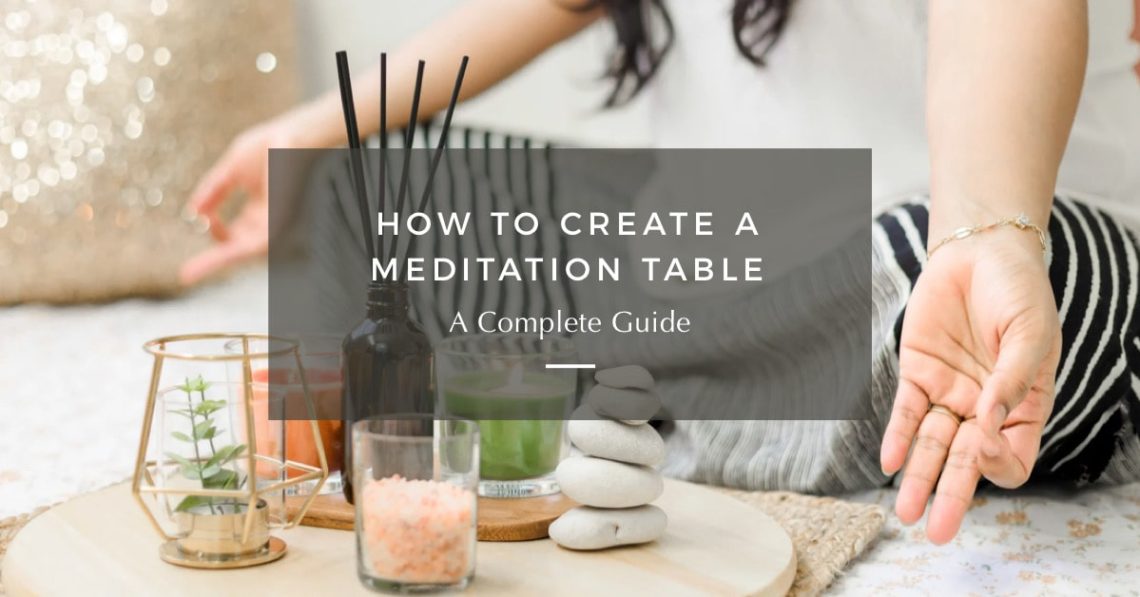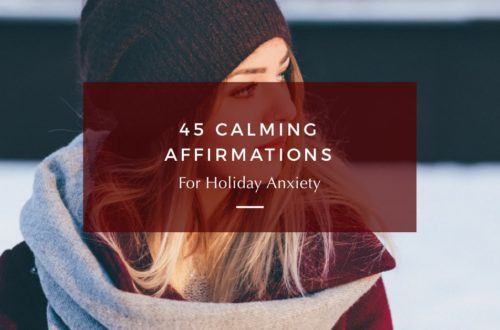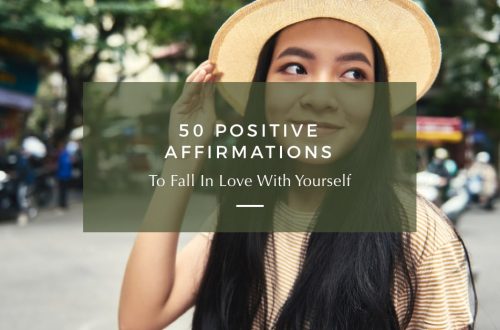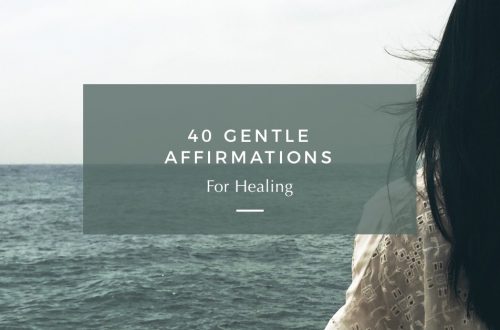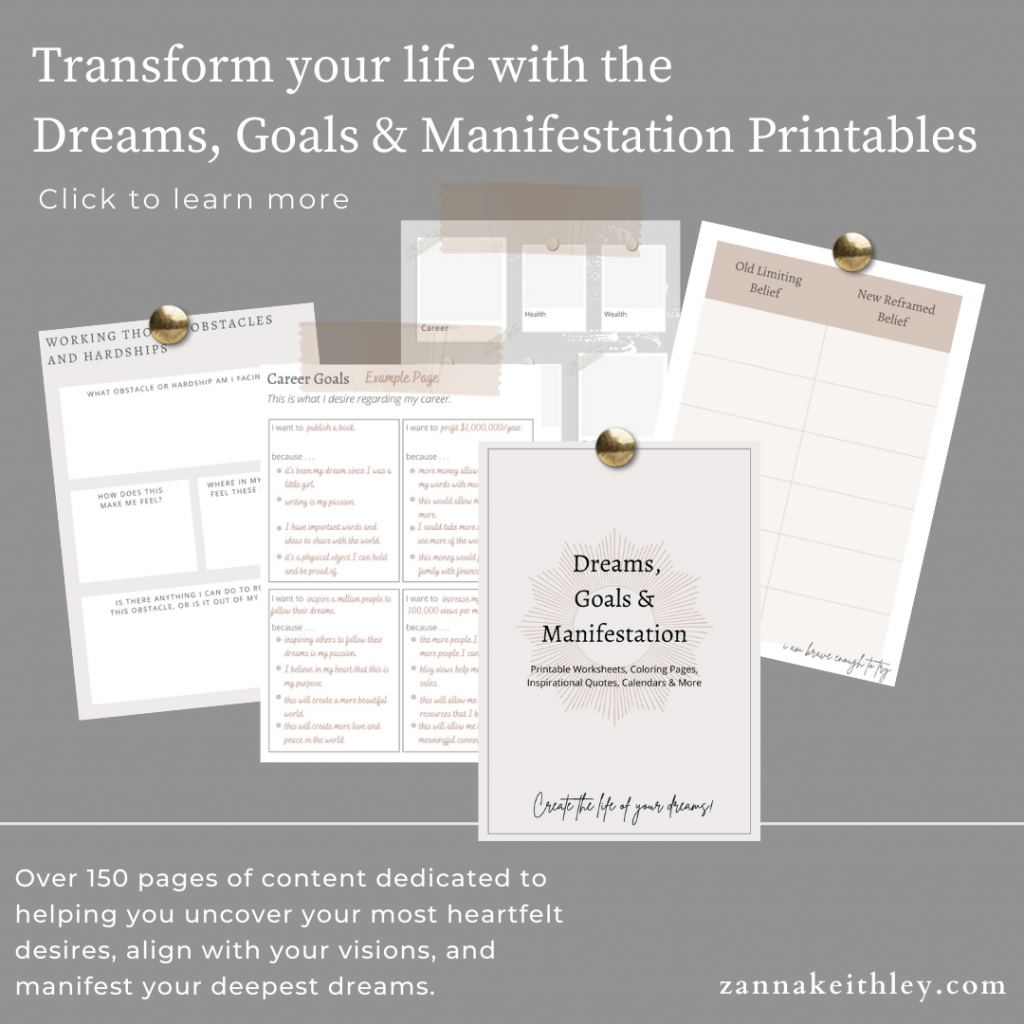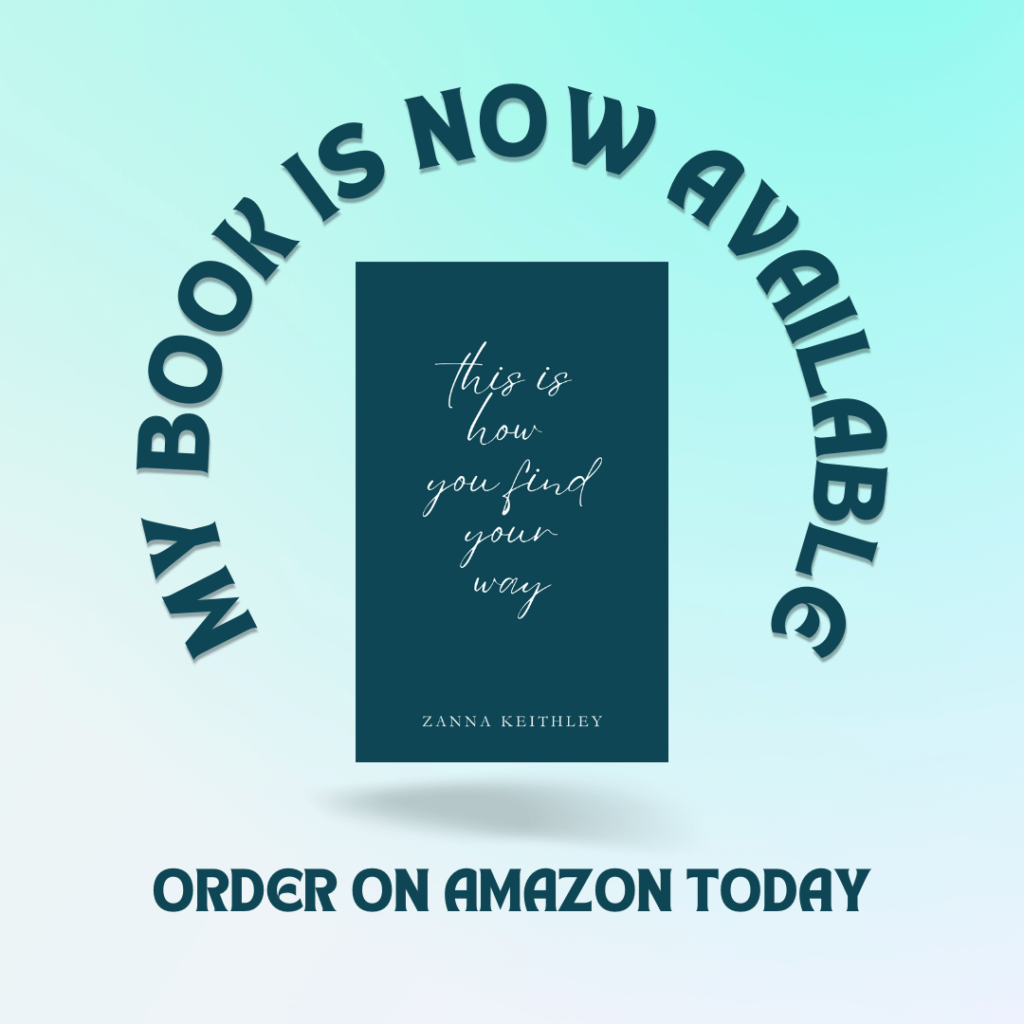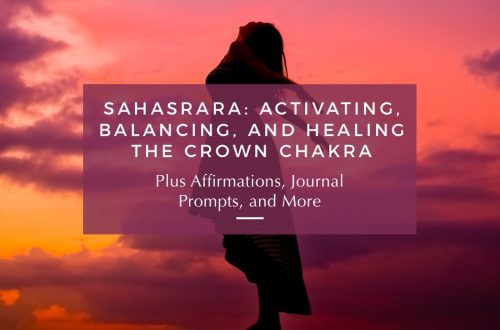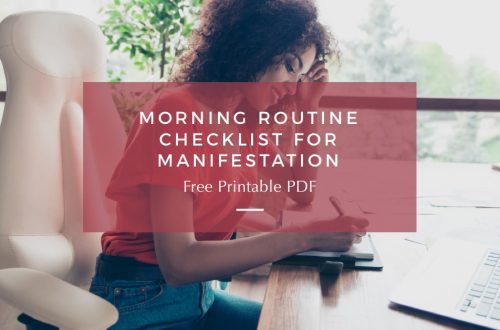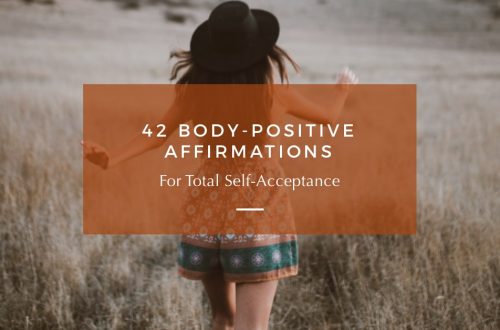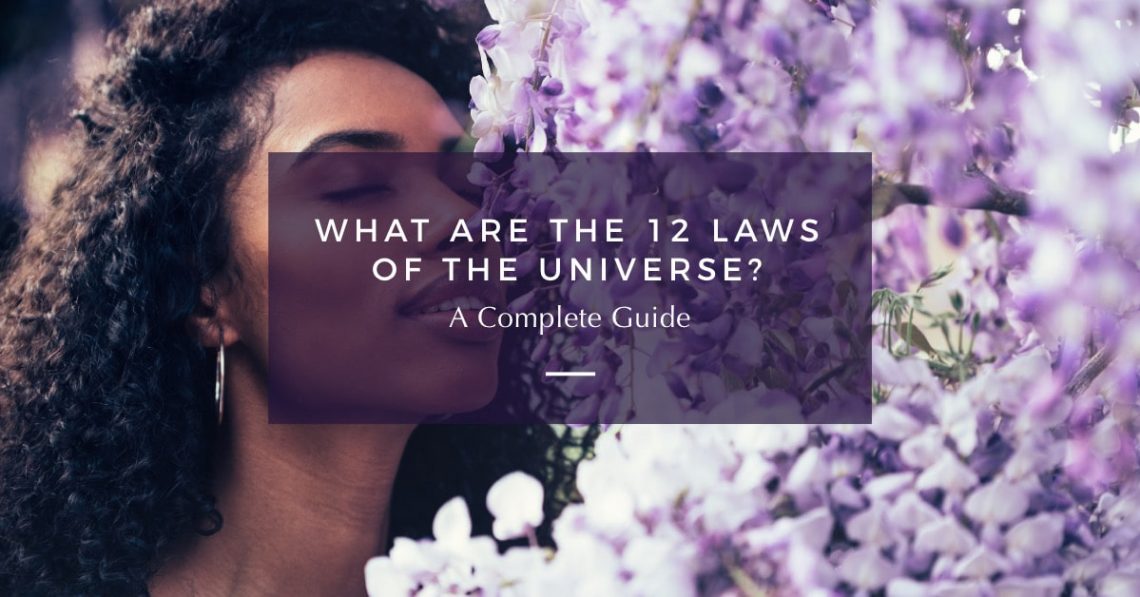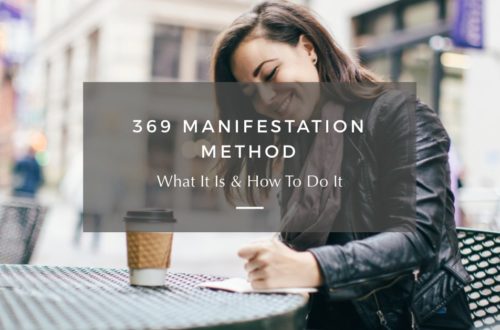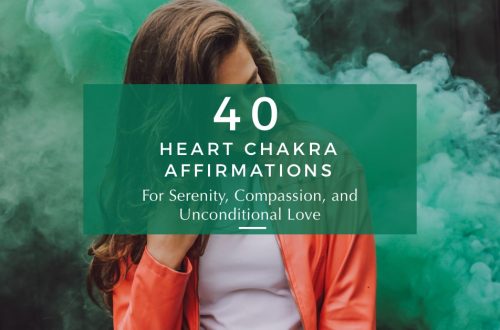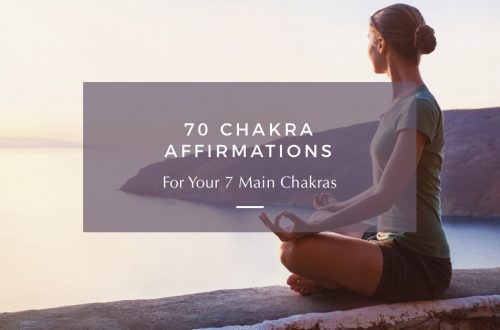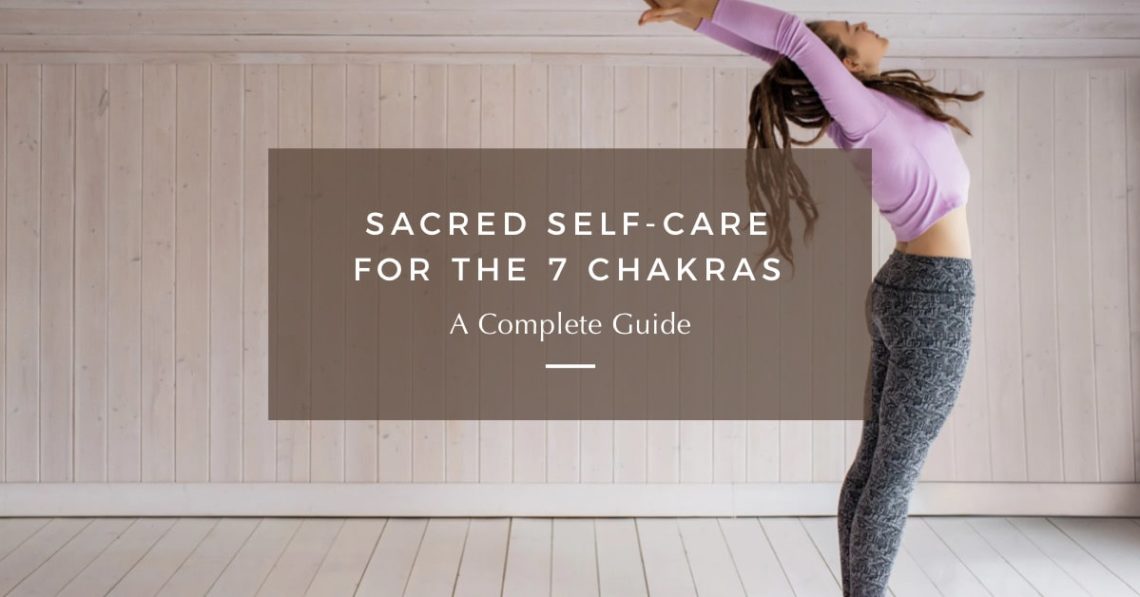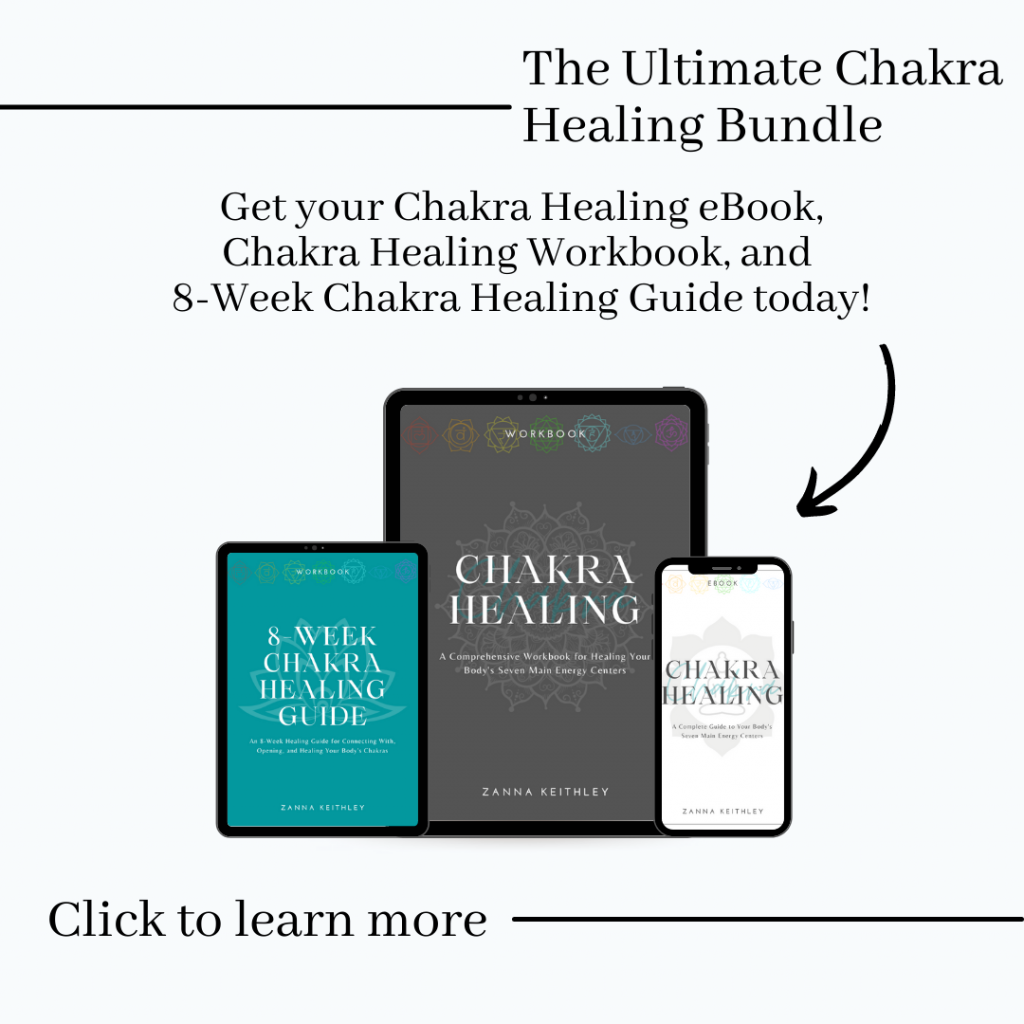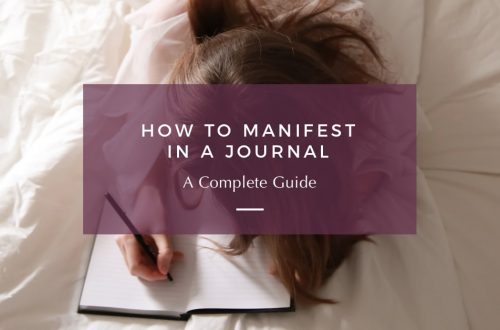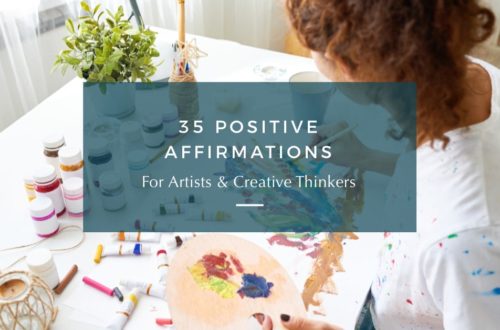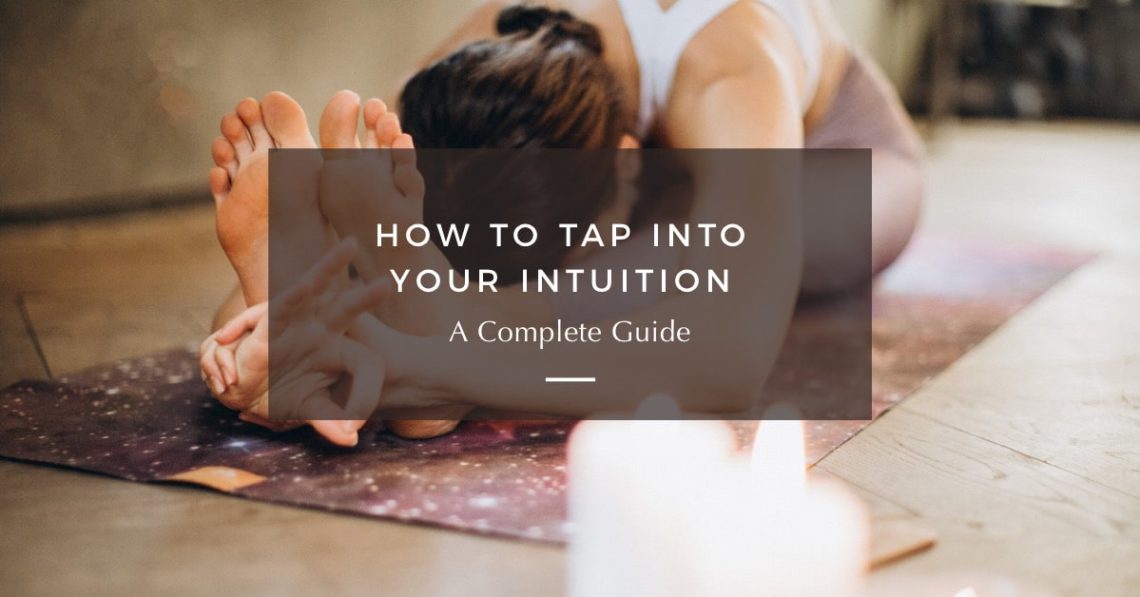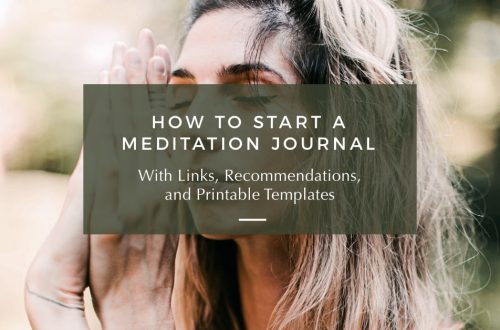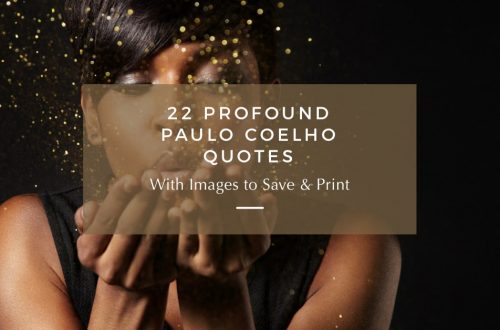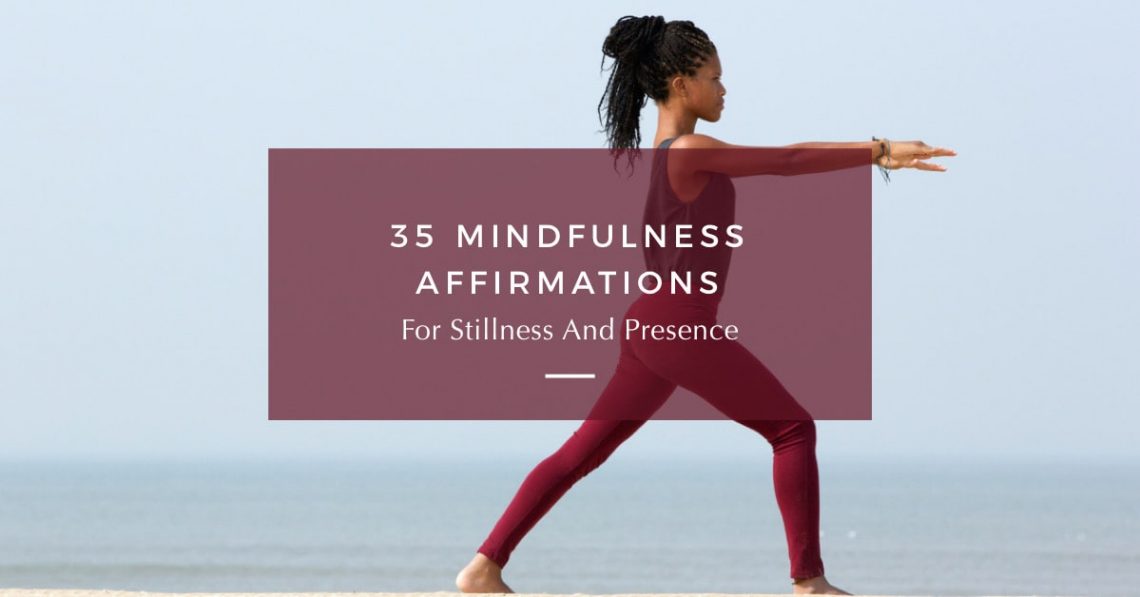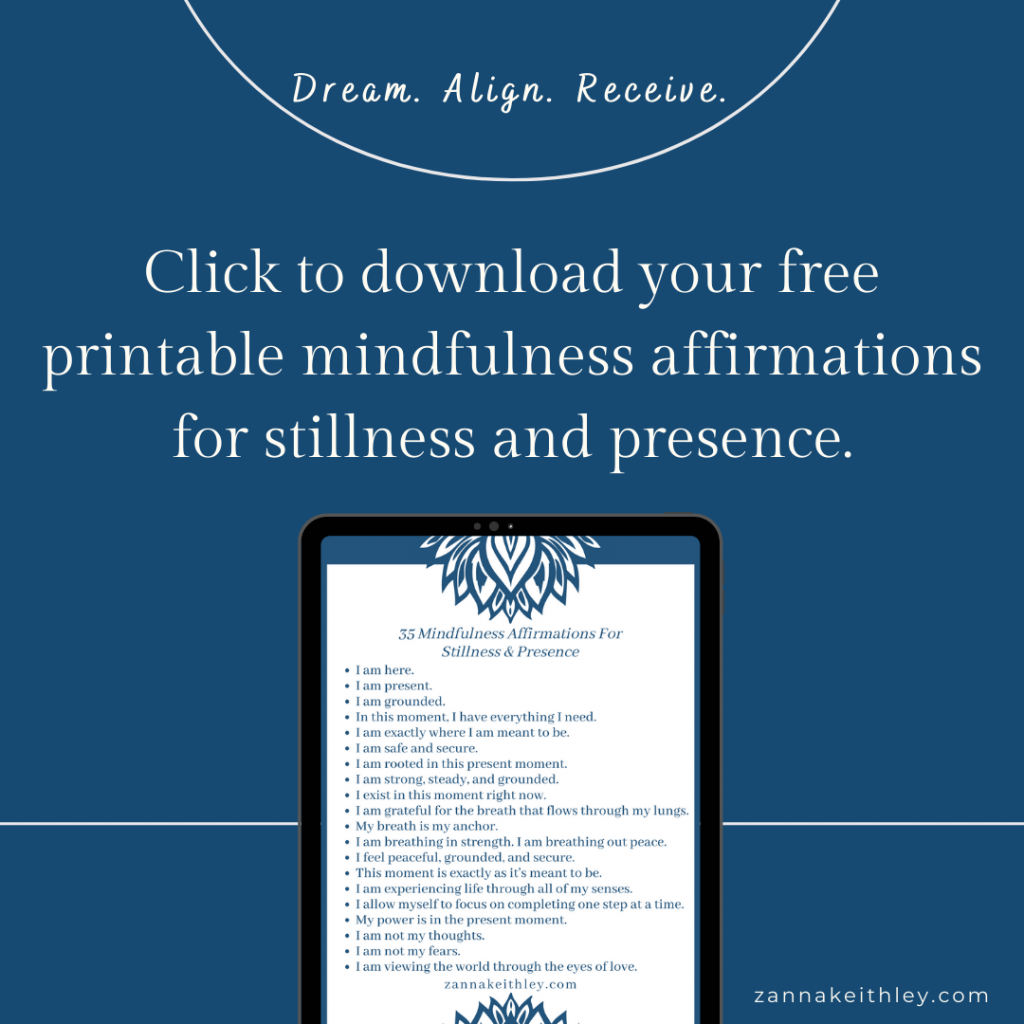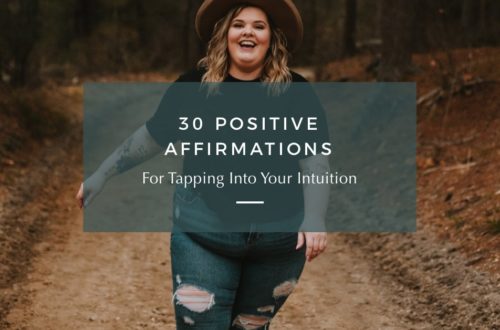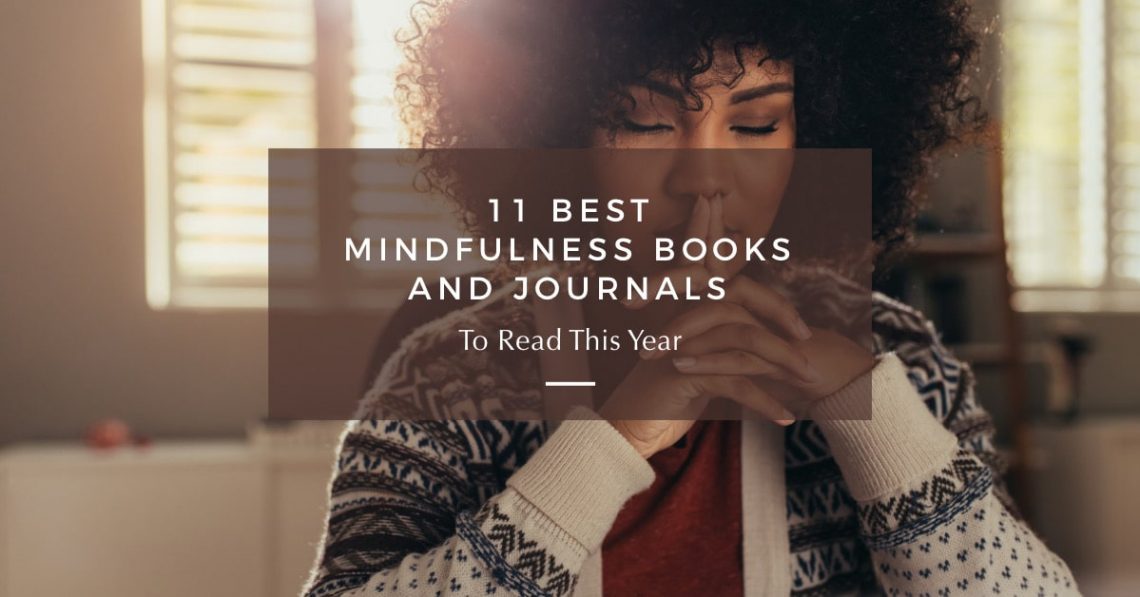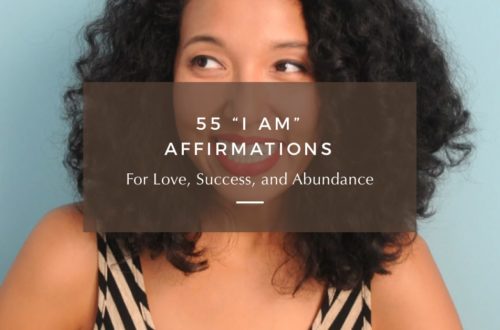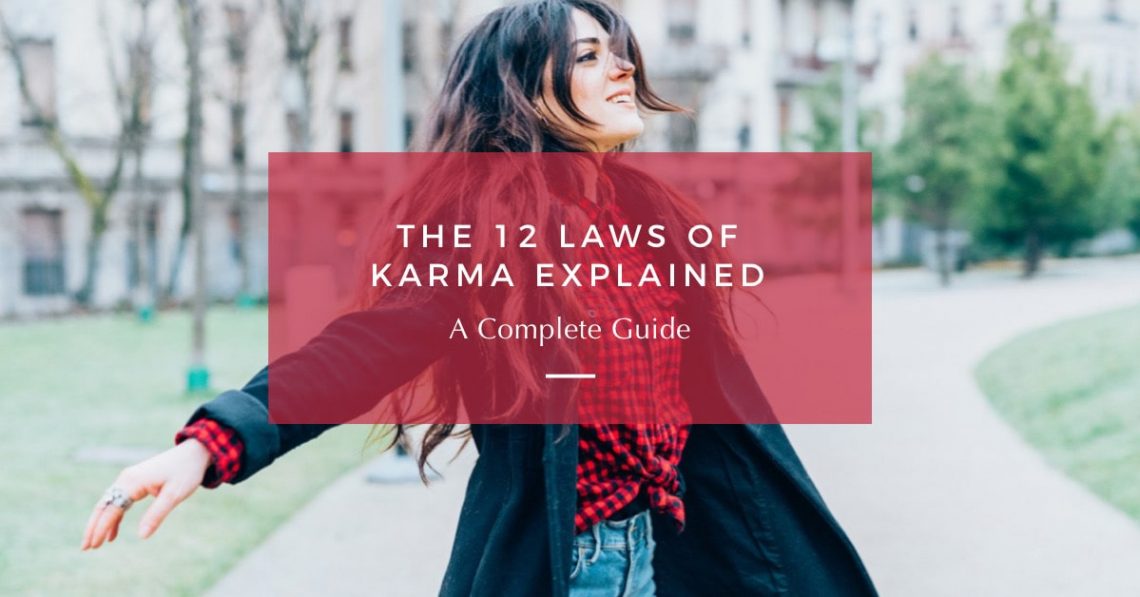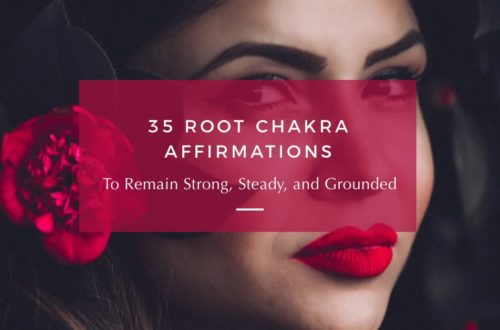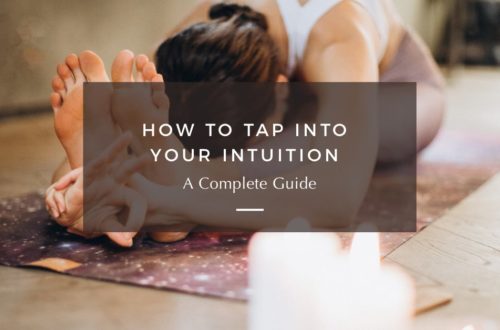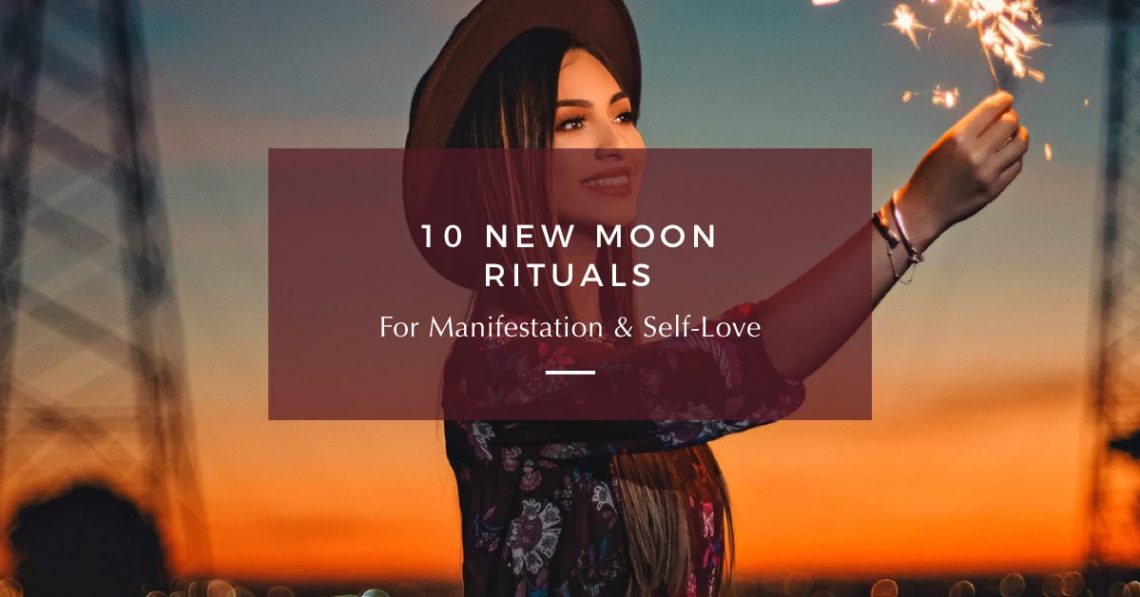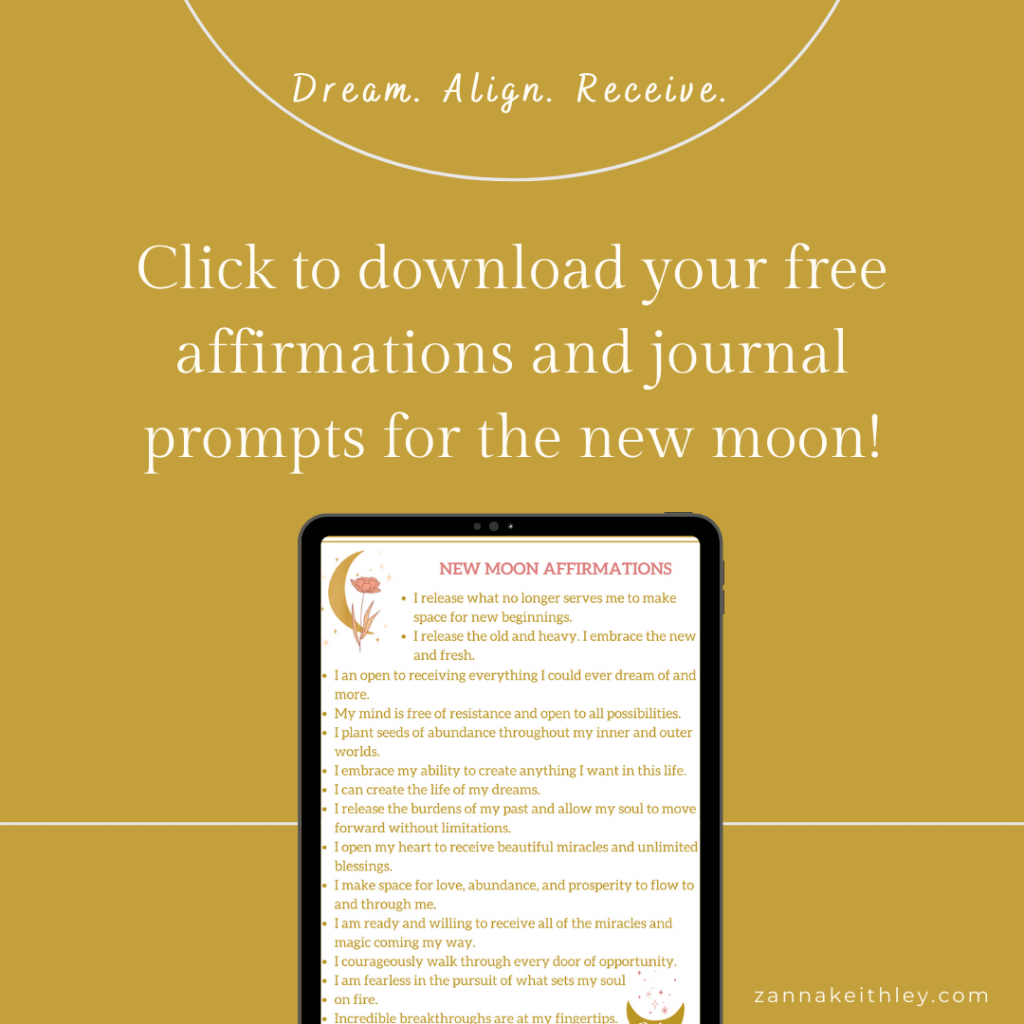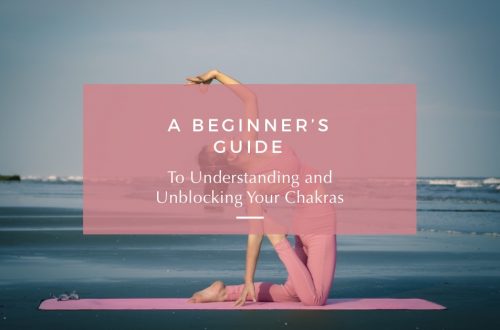-
How to Create a Meditation Table (A Complete Guide)
Are you looking to create a sacred space of your own that promotes feelings of tranquility and supports your total well-being? Discover everything you need to create your own meditation table, with over 50 links to tables and decor so you can start creating your perfect meditation table today.
Disclaimer: This post contains Amazon links. As an Amazon associate, I earn from qualifying purchases. If you purchase a product using my link, I may receive a small commission at no extra cost to you. You can read my full disclosure policy here.
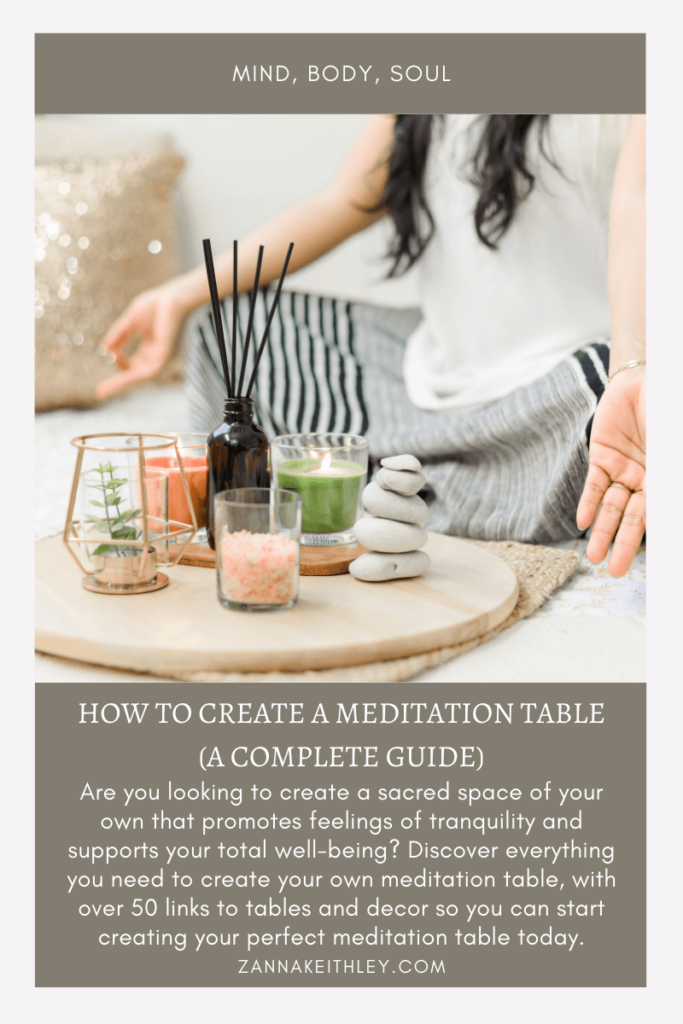
Pin this for later! How to Create a Meditation Table (A Complete Guide) How To Create A Meditation Table
A meditation table is a dedicated sacred space that promotes feelings of peace, calm, and tranquility within. The table itself is usually a small flat surface (i.e. a table, desk, or bench) with space around it for you to sit, meditate, and connect to your innermost self.
But the physical surface you choose is only half of what makes a meditation table such a profound tool for your spiritual growth.
Just as important are the objects you choose to set on and around the table.
I keep my meditation space pretty simple with just a meditation cushion to sit on and some of my favorite crystals and stones (Amethyst, Blue Lace Agate, Celestite, and Clear Quartz) on a small table nearby.
However, you can add as much or as little as you want here; crystals, candles, dried flowers, books, affirmation cards, and objects that hold significant personal meaning to you are just a start.
You can also add rugs, cushions, and other textiles to create the feeling of a complete, dedicated sacred space designed to serve and support your total well-being: mind, body, and soul.
So really, it doesn’t matter what you choose as long as it feels good to you.
What nourishes your soul? What feeds your spirit? What helps you connect with your truest, most authentic self?
Think about it this way:
You spend hours every day living externally–running errands and answering emails and completing to-do lists. Imagine that at the end of the day, you have a safe place where you can pause, breathe, and come home to yourself.
What does this look like?
Because that’s what this is really about. Yes, of course, this is a place to meditate. But it’s also so much more.
You can set your daily intentions here. You can pull affirmation cards. You can write in your gratitude journal.
Or you can just come here to take a deep breath and place your hand on your heart and breathe.
The important thing, really, is that it’s yours. Your space to feel safe. Your space to laugh or cry or whatever you need in the moment. Your space to continually come back to yourself, over and over again.
To help you get started, I’ve linked to items you can use to create your sacred space. I’ve also included answers to frequently asked questions regarding setting up and using meditation tables. You can use the links below to jump to the section you want to learn more about.
In This Article
Meditation Table FAQ
Does my meditation table have to be a certain size or shape?
Definitely not! Your meditation table can be as big or as small as you choose. Remember, bigger doesn’t always mean better. If you have only a small corner to dedicate to your sacred space, that’s more than enough. Choose a meditation table that fits your needs; dimensions and aesthetics are completely up to you.
What do I put on my meditation table?
Choose items that resonate with you. This meditation table belongs solely to you, and all that matters is the feeling the items bring when you look at and/or touch them.
You can put as much or as little on your table as you’d like; in fact, you don’t have to put anything on it at all if your soul desires a clean, empty space.
The most important thing is to choose items that help you to connect with your innermost self and that bring a sense of peace, calm, security, love, and connection with yourself and the world around you.
How do I set up my meditation table?
Set up your table in a way that feels calming to you. If you like everything neat and organized, then you might set it up so it looks balanced and orderly. If you think a little messiness is kind of beautiful, then you might let your inner creative take the reins and place items wherever your heart wants them to go. You might also test out a few different setups and pay attention to how each setup makes you feel.
Ultimately, do what makes you feel good. That’s it. Nothing else matters here.
How do I use my meditation table?
When you create your meditation table, take some time to set a purpose and intention for how you want to use this space. You can, of course, meditate in front of your table. You might also choose to come here in the morning to set intentions, recite affirmations, and express gratitude. When you’re seeking answers, this might be a place to look for them within. You might also like to sit at your meditation table after work to release the day and invite a sense of calm and peace into your evening.
Meditation Tables
To create your serene meditation table, you first want to start with the foundation on which you’ll be building upon: the table itself.
You may already have a piece of furniture in your home that would work perfectly for this function. If you’re a DIYer, this is a great opportunity to get creative as you check out local yard sales and thrift stores for the inspiring piece that speaks to you. Sand, stain, paint, or leave it perfectly imperfect: whatever feels right to you.
If you’re looking for something beautiful and new, the links below offer an array of styles to fit every price range. Just make sure to double check the dimensions to ensure the table fits your space!
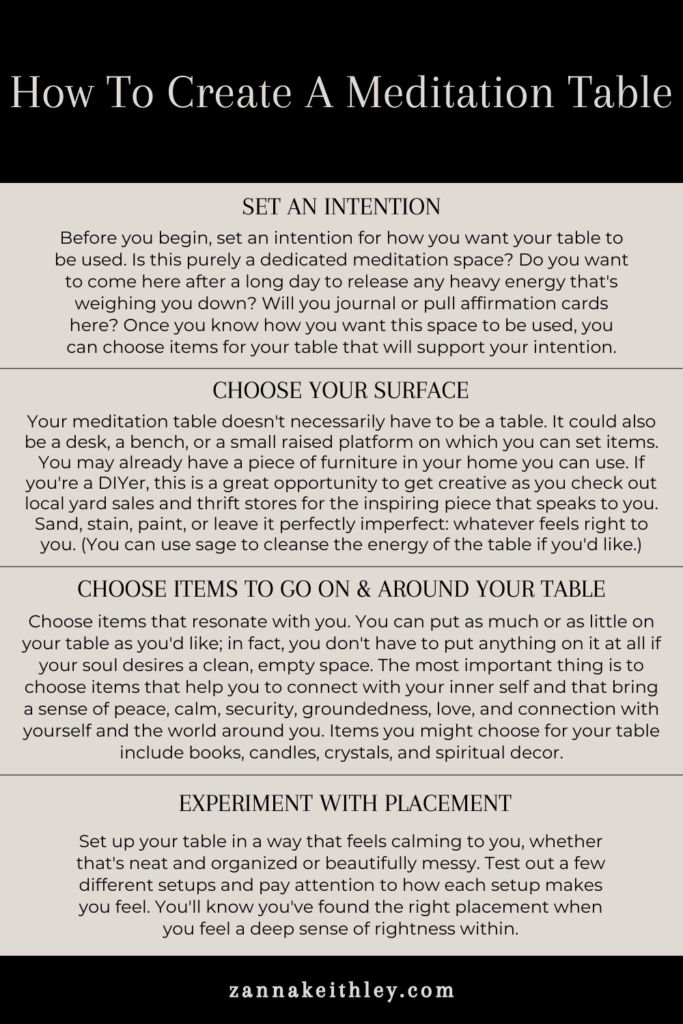
Items For Your Meditation Table
Books
There’s something special about being surrounded by books filled with beautiful words that soothe your spirit or delight your imagination. Even just setting a few books on your meditation table can fill you with serenity, inspiration, and creativity. Choose books that reach deep into your soul and speak to you. Below are a few options to get you started. For more inspiration, check out my article on the 11 best mindfulness books and journals to support your journey.
Signs: The Secret Language of the Universe by Laura Lynne Jackson
Inward by Yung Pueblo
The Four Agreements by Don Miguel Ruiz
Daily Rituals: Positive Affirmations to Attract Love, Happiness, and Peace by Phoebe Garnsworthy
Sacred Woman by Queen Afua
Dear Universe by Sarah Prout
Candles
If you’re a candle lover like me, then the concept of “too many candles” doesn’t exist. Candles bring a deep sense of calm, tranquility, and peace within. It’s also a powerful meditation practice to stare into the dancing flame of a candle and let it wash over your being.
Crystals and Stones
Another thing I’m pretty sure you can never have too many of? Beautiful crystals and healing stones. When choosing crystals and gemstones, you can either pick ones that have specific meanings, or you can simply choose ones that speak to you. If you see a crystal and feel pulled to it, trust your gut. To help you get started, check out these guides on crystals for new beginnings and crystals for manifestation.
Affirmation Cards
Affirmation cards are a truly powerful addition to your meditation table or sacred space. One profound practice is to sit at your table every morning, surrounded by quiet and stillness, and pick one card from your affirmation card deck. Read the affirmation, and feel the positive words in every cell of your body. You can also spend a few minutes reflecting on what the words mean to you. I love that this is a practice you can do in five minutes or less that will have a meaningful impact on your entire day.
Below are a few of my favorite affirmation card decks to help you get started. And for more ideas on what you can do with your deck, check out my guide on how to use affirmation cards.
Moon Decor
This is for anyone who feels a deep connection with the moon. If you’d like, you can print out or purchase a moon calendar for the year and incorporate rituals into your routine that correlate with the moon’s phases. (For instance, setting new intentions during the New Moon.) To help you get started, you can check out this moon phase calendar from moonconnection.com.
Meditation Materials & Decor
Everyone’s meditation and spirituality practice looks different, so there isn’t a one-size-fits-all product here that will suit everyone. Once again, choose what calls to you.
Spiritual Decor
Again, everyone’s spiritual practice looks different. So once again, choose items that feel right to you. Whether that’s a Buddha figurine or a Mother Gaia statue, or something else completely, open your heart to what resonates most to you.
Cushions, Rugs, and Textiles
Finally, this last category is all about what’s surrounding your meditation table: meditation cushions and benches, rugs, tapestries, canopies, and anything else you fill your space with. You can turn your meditation table into a loving sacred space where you nurture your mind, body, and spirit.
And for anyone who might be skeptical of meditation cushions: So. Was. I. And then I tried one, and within five seconds of sitting on it, I was a believer. (I own the exact Florensi meditation cushion I link to below and use it every single day.)
Have you created your own meditation table? What items do you like to place on and around it? Share your tips for how to use a meditation table to support your mind, body, and soul in the comment box below!
And for uplifting affirmations, chakra resources, meditation tools, self-love encouragement, and more, be sure to follow me on Pinterest and Instagram!
More Articles You May Like
- Sacred Self-Care For The 7 Chakras (A Complete Guide)
- Vision Board Ideas To Visualize Your Ideal Future (With Examples)
- 8 Powerful Guided Meditations For Manifesting Your Dreams
- 30 Journal Prompts For Self Growth (& Deeper Self-Love)
- 11 Beautiful Poetry Books About Self-Love & Acceptance
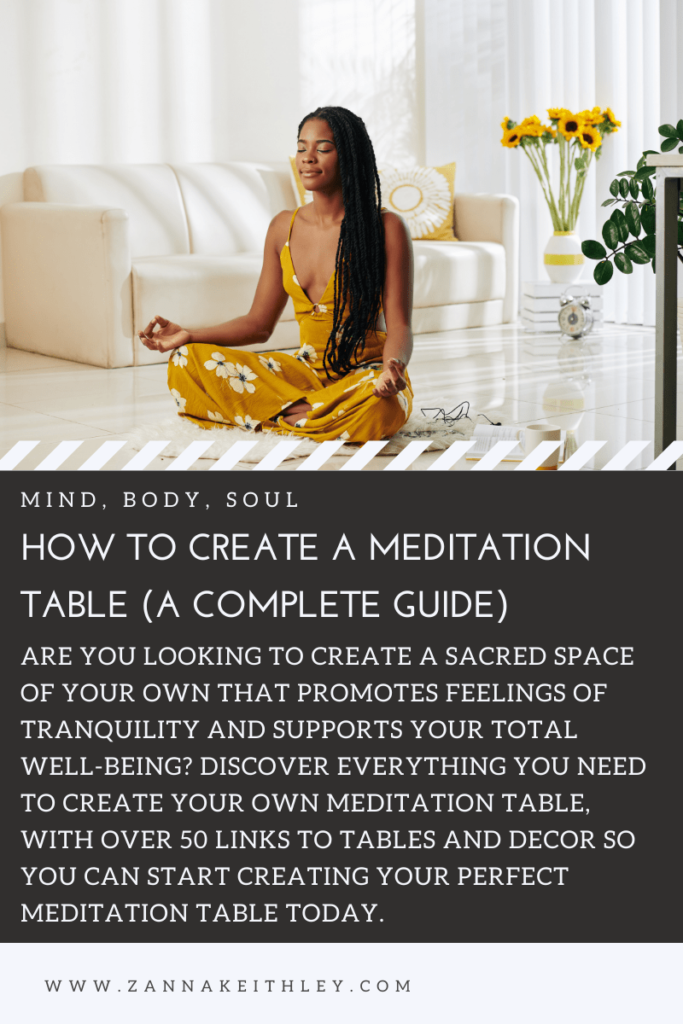
Pin this for later! How to Create a Meditation Table (A Complete Guide) 
Zanna Keithley is an author, poet, and social media content creator who writes short prose dedicated to inspiring readers to follow their dreams, trust their intuition, and create beautiful and fulfilling lives. You can find her original writing on Instagram @zannakeithley.
-
The Law Of Polarity: What It Is And Why It Matters
In this article, learn about the Law of Polarity, one of the 12 Laws of the Universe. Plus, get journaling questions to help you understand how the Law of Polarity can offer a deeper perspective of your own life.

Pin this for later! The Law of Polarity: What it Is and Why It Matters The Beauty Of Contrast
When I lived in Hawaii for a year, one of the most surprising realizations I had was realizing that I actually kind of missed cold weather.
Now, if you know me, you know this is a pretty big deal.
I’m someone who has always lived for warm weather and sunshine. I’m the weird person at the summer barbecue who would rather sit in the sun than in the shade, and the temperature in my apartment is a consistent 75 degrees Fahrenheit.
To say I don’t like the cold is an understatement. I’ve spent most of my life despising it. I was born for sunshine and summer heat, and I’ve always dreaded the coldness of winter.
At least, until it was gone.
During the months of continuous hot days I experienced in Hawaii, something kind of funny started to happen. I realized that I actually kind of missed those cold days when I’d get to stay in my sweats all day and snuggle up on the couch with a mug of something warm.
I missed the gray, rainy days when I’d feel completely justified doing absolutely nothing at all.
And I especially missed having a white, snowy Christmas, even though I always assumed Christmas in Hawaii would be a dream.
To this day, if you ask me what I prefer, I’ll absolutely tell you I’d take bright, sunny days 98% of the time.
But I can begrudgingly admit that some cold days aren’t so bad, and I know I’d be sad if they didn’t exist at all.
For many reasons, the contrast of hot days and cold ones is needed, even if we prefer one over the other.
This is the Law of Polarity.
What Is The Law Of Polarity?
The Law of Polarity states that everything has an opposite, and the existence of these opposites is vital in helping us to gain a deeper perspective of our own lives.
The example I used above shows you how this law plays out in its most basic form. While I’m clearly on Team Sun, I don’t think I’d want it to be bright and sunny all the time. There’s a reason why cold weather exists.
Plus, rainy days are good for both the earth and the soul.
On top of that, the existence of the cold makes me appreciate the sun even more. If all I ever knew was sun, I’d probably take it for granted and eventually get sick of it.
One way to think about the Law of Polarity is to think of two sides of the same coin, which we typically call Heads and Tails.
These two sides are forever inextricably linked. As long as you’re holding this coin, there will always be a Heads and a Tails. One cannot exist without the other. And when you need to make a decision and decide to flip a coin, Heads represents one possible outcome and Tails represents its opposite.
Now, you can pretty much take anything that’s considered an opposite and view it as though they’re opposing sides of the same coin: hot vs. cold, light vs. dark, good vs. evil. All of these things are forever linked together. They’re two sides of the same coin, or opposite sides of the same pole. Because there’s duality in everything, you can’t have one without the other.
This is the Law of Polarity at its foundation: everything in the world has an opposite. Duality exists in everything.
And the existence of these opposites is critical to how we understand our lives and the world we live in.
Lessons From The Law Of Polarity
If you had to break the Law of Polarity into its core parts, you might use words like opposites, contrast, and duality.
Every positive has a negative. Every up has a down. And every day has a night.
It seems like a simple-enough concept, but what can it teach you?
Love the Good When You Have It
Every time I get sick, I think, “I am never going to take for granted the days my body feels healthy again.”
Actually, I think about this with all the pain I’ve experienced, especially the really big, painful experiences. Like when I crashed mountain biking a couple years ago and ended up in the ER. Or when my body broke out in hives for two weeks after a bad reaction to laundry detergent.
“I just want my body back,” I remember thinking during both of these instances. “I’ll never take my body for granted again. I promise.”
Moments of pain and sickness have helped me to truly appreciate my body and all that it does for me.
And this is one of the greatest miracles of the Law of Polarity—it helps us to value and appreciate all the aspects of our lives we’d likely take for granted if we didn’t experience some kind of contrast.
A not-so-great relationship often helps you to value and cherish a really good one more fully and deeply. Scholastic or career rejection can help you to love and feel grateful for your successes. Knowing what it’s like to have less money often helps you appreciate having more. There is purpose to all of it. There’s a gift in all of it.
But still, it’s up to you to find the gift and embrace it for what it is. You get to choose your mindset. You can say, “The universe is always out to get me,” or you can say, “Every experience I’m given is an opportunity for gratitude and growth.”
These two perspectives are available to you at all times. It’s just up to you to decide which way you want to lean.
The “Negative” Has Value & Purpose, Too
For me, this is most clearly shown in my relationship with cold weather. I despised the cold weather until I didn’t have it anymore. Then, I realized that there were things about the cold that I actually liked.
My favorite way to think about this, though, is in terms of darkness and light.
Symbolically, light is often used to represent a universal good, while darkness is used to represent a universal bad.
But “good” and “bad” are just labels we bestow upon ideas and things—there is no moral good or bad when it comes to darkness and light.
And darkness has value and purpose, just as the light does.
Darkness is beneficial for the health of the planet as well as our own biological health.
But it’s not just the darkness of the night that has its benefits. We all carry shadows within us, and often, we try to suppress these shadows or pretend they don’t exist.
But if you look deeper, you’ll see that your shadows are kind of beautiful, too. Your grief, sadness, pain, and even the moments when you get angry at the universe are all evidence of a life fully lived.
I’ve found that my inner shadows are usually my greatest teacher. When I step into my darkness, I uncover my innermost thoughts and feelings; this, in turn, helps me to grow and transform.
When you really dig into the Law of Polarity, you see that often, it isn’t a situation of one side of the coin being “good” while the other is “bad.” Rather, both sides have meaningful value to offer the world.
You Have To Know What You Don’t Want To Know What You Do Want
This is one of the greatest lessons we often learn in early romantic relationships. When you first start exploring serious relationships, it’s likely you don’t have a long list of must haves and deal-breakers. This is generally a good thing. Keeping your mind and heart open to multiple possibilities allows you to discover more about yourself and what you want; you may even uncover some unexpected realizations along the way.
It may be easy to write off the relationships that ended badly as mistakes, but nothing is truly a mistake. Every experience offers an opportunity to learn.
For instance, maybe you had never thought a lot about political views in a relationship, but after dating someone with polar opposite political views, you’ve realized that you need to be with someone who holds similar views and attitudes. This doesn’t mean you have to agree on everything all the time, but there may be some social and political issues that are especially important to you.
Or maybe traveling is a priority for you, and you’ve dated someone who isn’t big on traveling. You may not have known just how important this was to you until you dated this person, and now it’s something you know moving forward.
In many situations, we have to experience what we don’t want in order to truly know what we do want.
The first time you buy or rent a home, you’ll likely begin to notice an assortment of random “little things” that might bother you, like having only one sink in the master bathroom instead of two. And maybe this isn’t a deal-breaker, but then you start to notice that there isn’t enough storage space to keep all your things.
Storage space, you realize, is a non-negotiable.
So now you know that when you rent or buy your next home, you’ll absolutely be making sure that there’s plenty of storage wherever you go.
Contrast illuminates what’s really important to you. It sheds light on what matters.
Let the negative situations be teaching experiences to show you what you do and don’t want in your life.
- You May Also Like: The 12 Laws of Karma Explained (A Complete Guide)
Going Deeper With The Law Of Polarity
How can you use this knowledge of the Law of Polarity to gain a deeper understanding of your own life? And how can it help you with any current hardships you’re facing?
To understand how the Law of Polarity is currently playing out in your life, you have to take a step back and get a wider perspective.
Think about the different aspects of your life right now: your relationships, your career, your home, your health, your free time, and your habits.
What’s working? What’s not working? For anything that’s not working, can you pinpoint what exactly it is? What is this experience showing you? What are you learning about yourself and your preferences?
For anything that you feel isn’t working, don’t judge yourself. In fact, have the perspective that this is a good thing—that it’s an opportunity to learn, grow, and evolve.
Below are some questions to help you gain an understanding of how the Law of Polarity plays a role in your life. You can journal your answers or simply think about your responses.
- In what ways have you experienced contrast in romantic relationships? (What you do want vs. What you don’t want)
- In what ways have you experienced contrast in your career? (What you do want vs. What you don’t want)
- What other examples of contrast in your life have I experienced?
- Write about a time when experiencing something you didn’t want helped you to learn what you did want.
- Write about a time when something went wrong, and this helped you to have more appreciation for when the same thing is going right. (For example, when sickness allowed you to appreciate your healthy body more.)
- Write about something that you’ve always labeled as bad (i.e., cold weather), but you’ve discovered there’s value and meaning to the existence of this thing.
- What’s one aspect of my life right now you wish you could change? What is this teaching you? How can you grow through this experience?
- What’s one aspect of your life right now that’s going really well? Has this aspect of your life always gone well? What did past experiences teach you, and how did they lead to this thing going well right now? (For instance, if you’re in a really great relationship or career right now, did you have a past relationship or job that helped you to see what you didn’t want, leading you to this relationship or career?)
For more resources on spirituality, meditation, manifestation, and all things self-love, be sure to connect with me on Instagram and Pinterest, where I’m posting positive affirmations and empowering messages daily.
You May Also Like:
- 33 Profound Spiritual Healing Quotes To Guide Your Path
- 30 Journal Prompts For Self Growth (& Deeper Self-Love)
- Vision Board Ideas To Visualize Your Ideal Future (With Examples)
- 9 Powerful Guided Meditations For Manifesting Your Dreams
- How To Protect Your Energy (7 Essential Practices)
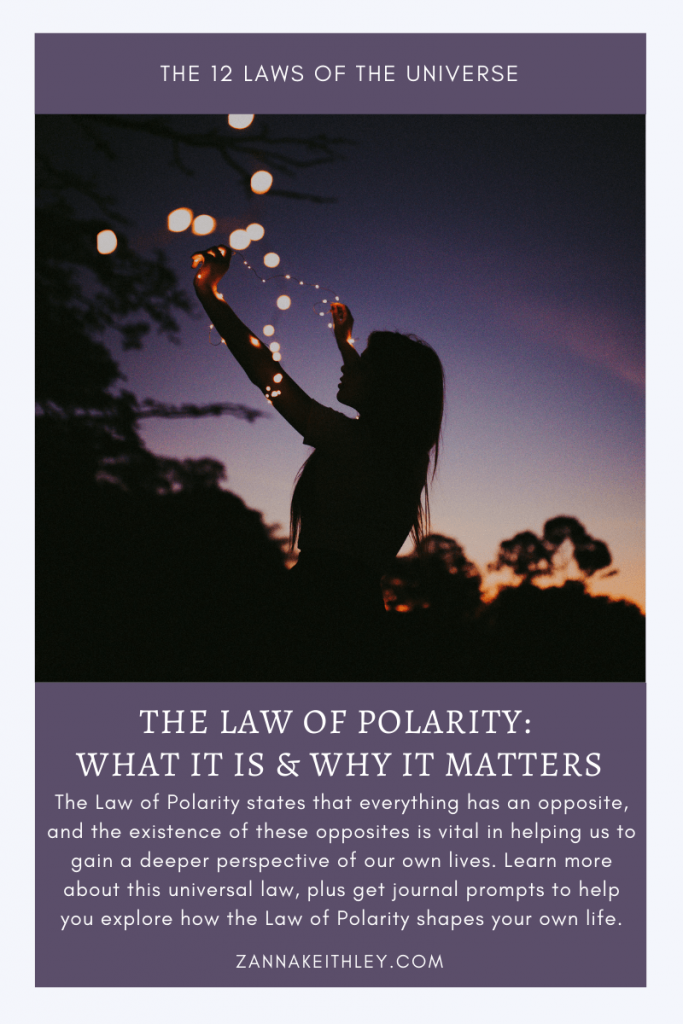
Pin this for later! The Law of Polarity: What it Is and Why It Matters 
Zanna Keithley is an author, poet, and social media content creator who writes short prose dedicated to inspiring readers to follow their dreams, trust their intuition, and create beautiful and fulfilling lives. You can find her original writing on Instagram @zannakeithley.
-
What are the 12 Laws of the Universe? (A Complete Guide)
In this post, learn about the 12 Laws of the Universe and how they can help you create a life of true joy, love, freedom, and abundance.
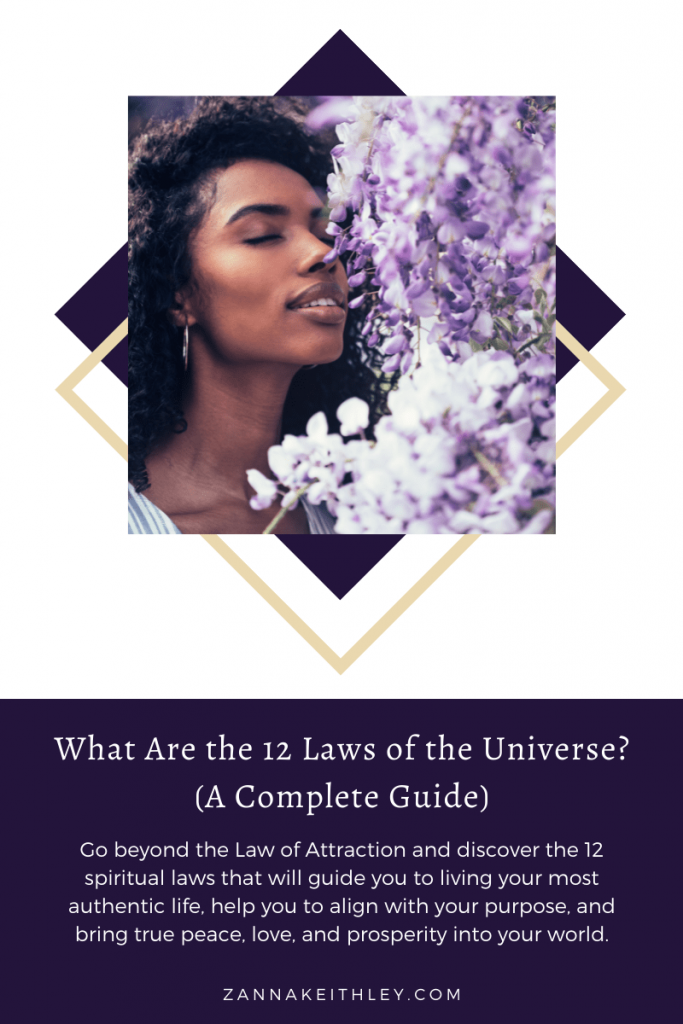
Pin this for later! What Are the 12 Laws of the Universe? (A Complete Guide) What Are the 12 Laws of the Universe?
You’ve likely heard of the Law of Attraction. The belief that like attracts like has inspired millions (judging by the over 30 million copies of The Secret that have been sold) to take control of their lives through the power of their own vibration.
In the most basic sense, the Law of Attraction works like this: if you approach your daily life emitting feelings of joy, love, and positivity, you receive experiences in your life that mirror these emotions.
But if you’re constantly negative and believe that nothing ever works out for you, you’ll continue to receive experiences that reflect this belief.
Essentially, your outward world reflects your inner energy.
Most people learn about the Law of Attraction and stop there. But this is a mistake.
Because the Law of Attraction is only one piece of a much bigger puzzle.
You see, the Law of Attraction is just one of just one of 12 spiritual laws that are all inextricably linked. When you live in alignment with all 12 of these laws, you feel a greater sense of purpose and are able to see how all experiences serve your highest good. These laws also guide you in creating your truest, most authentic, most abundant life.
For instance, the Law of Attraction doesn’t really work if you’re not also taking meaningful action to create the life you want to live. You can’t just sit around wishing for good things to show at your doorstep. That’s where the Law of Inspired Action comes in. (More on this below.)
Just as I discussed in my post on the 12 Laws of Karma, these laws aren’t mean to restrict or limit your freedom. It’s actually the very opposite. They’re meant to set you free.
When you live in alignment with the 12 universal laws, you feel a deeper sense of empathy and compassion for others. You understand your own power in creating the fulfilling life you desire, and you’re able to feel deeper gratitude and appreciation for all that you have. You feel aligned with your purpose and are able to navigate the balance between work and rest.
These 12 universal laws help you to create more joy, love, peace, and prosperity in your daily life.
Below, I go in-depth on each of the 12 Laws of the Universe and how they can serve you in your daily life. As you read through these laws, I encourage you to approach them with an open heart and open mind. You might even choose to journal about each of these laws and how they connect to your own life.
The 12 Laws of the Universe
Law of Divine Oneness
The Law of Divine Oneness states that everything and everyone is intrinsically connected to one another as we all come from the same source.
You have a substantial impact on the world with every word you say, thought you think, belief you hold, and action you take. Sometimes, you’ll gain an understanding of how your words and actions affect others, and other times, you may never fully become aware of how something you said or did had a ripple effect in the universe.
This is the foundational law of the universe, and it’s rooted in empathy and compassion. As you gain awareness of how you’re intrinsically connected to all beings, you cultivate more empathy for others. You’re able to release anger and negative feelings toward another because you inherently understand that they are no different from you. We are all one.
Law of Vibration
The Law of Vibration states that everything and every being is in a constant state of vibration, always emitting frequencies and energies that often aren’t seen on the surface. Everything is always in constant motion.
Take a look around you: every object you can see is emitting a certain frequency. Some are higher frequencies and some are lower. Next time you walk outside, look up at the sky. The sun carries its own energy. So do the cars on the road. And the trees. And even the phone and wallet you’re carrying.
Now look within. You, too, are emitting a vibrational frequency. This frequency can and often does change. And once you understand that you possess your own vibrational frequency, you realize you have the power to tune your frequency to a higher vibration.
The vibrational frequency you emit has a profound effect on your daily experience. When you operate at a higher frequency, you invite a greater sense of purpose and fulfillment into your world.
Law of Correspondence
Have you ever heard of the phrase, “The universe continues to deliver to you the same lesson until you learn it”? The Law of Correspondence states that patterns continue to repeat in the universe on both grand and small scales.
Look at recurring patterns in your own life. Do you feel like you continually have bad luck with dating? Have you tried and tried to be successful in a specific endeavor to no avail? Do you ever feel like the universe is out to get you?
The patterns we experience are directly correlated to our inner worlds. This means that what you’re experiencing in your outer world is a mirror of your own inner world. You have the power to change your lived experiences in your outer world by changing your inner world.
If your life has felt particularly chaotic recently, consider the ways in which you may be experiencing chaos within. To release the external chaos and invite more peace into your life, seek to cultivate peace inside you first.
Law of Attraction
Chances are, you may already know a bit about the Law of Attraction as this is undoubtedly the most well-known of the universal laws. The Law of Attraction states that like attracts like; the vibrations, beliefs, and emotions we put out into the world are what we receive in our lived experiences.
If you approach your daily life emitting feelings of joy, love, and positivity, you receive experiences in your life that mirror these emotions. But if you maintain a negative attitude in which you always consider yourself the victim and claim that nothing ever works out for you, you’ll continue to receive experiences that reflect this belief.
I do always think it’s important to note that the Law of Attraction is not an invitation to engage in toxic positivity. You do not have to force yourself to suppress negative emotions and pretend you’re happy when you’re feeling sad or disappointed or angry.
You can feel sad sometimes but still believe in your heart that everything is working out for your highest good. You can have a bad day while also knowing that it will pass. When you experience these emotions, explore them with gentleness and compassion, and ask yourself, “What can I learn from this experience? In what ways is this experience serving my highest good?”
- You May Also Like: What Does It Mean to Manifest Something? (An Introductory Guide to Manifestation)
Law of Inspired Action
The Law of Inspired Action is inextricably connected to the Law of Attraction and is often the overlooked step that may cause some to claim that the Law of Attraction “doesn’t work.”
The Law of Inspired Action states that you must take real, actionable, inspired steps in order to achieve your goals and invite your manifestations into your life.
But what exactly is an inspired step? An inspired step is action derived from your inner knowing. It’s when something deep within calls you to take action, even when it doesn’t make sense. Inspired action is based on surrendering to the guidance of the universe and listening to the call of your inner knowing.
Let’s use dating as an example. You want to attract love into your life, so you choose to vibrate at the frequency of joy, love, and all the positive feelings you associate with finding the love of your life. You go out every weekend, believing this is the best way to meet someone.
However, deep down, your inner knowing is telling you to sign up for an online dating website.
You resist the idea because you really wanted to meet someone “the old fashioned way.” Going out every weekend is an action, but signing up for that online dating profile would be inspired action because it stems from a deep inner knowing within.
Law of Perpetual Transmutation of Energy
This one has arguably the most confusing title, so let’s break it down:
- Perpetual: constant, everlasting, without end
- Transmutation: the act of changing/being changed from one form into another
The Law of Perpetual Transmutation states that energetically, everything in the universe is constantly fluctuating and changing from one form to another. Most of the time, you don’t see these changes because they’re happening at a cellular level.
Here’s what you need to know about this law: your vibrational frequency has the power to affect another’s, and another’s vibrational frequency can affect yours. If a coworker comes to your cubicle and starts complaining, their negativity can affect your own energy. You don’t see your energy changing, but you can feel it; one moment, you were having a great day, and the next, you feel frustrated and dejected. On the other hand, your positive energy can lift up your coworker’s and help their day become a little brighter.
The key here is understanding how another’s energy can affect your own and vice versa; once you understand this power, you can use it to protect yourself from negative energy and uplift those around you.
Law of Cause and Effect
This law is exactly as it sounds, and if you’re familiar with Newton’s Third Law of Motion, you’re likely already putting the pieces together. The Law of Cause and Effect states that all actions have corresponding reactions, or consequences. (The word “consequences” tends to have a negative connotation, but consequences can be positive, too).
When you donate money to a person or organization in need with a sincere heart, this kindness will come back to you, even though you may not always see it right away. Similarly, if you lie, cheat, or steal, you will eventually feel these effects, even if not immediately.
This law is directly tied to the Great Law, the first of the 12 Laws of Karma.
Law of Compensation
The Law of Compensation is often tied to the phrase, “You reap what you sow.” This can have both a positive and negative connotation, and the idea is pretty closely tied to the concepts in the Law of Attraction and the Law of Cause and Effect. (What you put out is what you receive.)
So how does this law differ from the other laws it’s connected to?
I like to think of it as this: compensation can come in many forms, both good and bad. And often, what may appear good on the surface can really be a negative thing, and what can appear negative on the surface can be a positive thing.
For instance, say you’ve been trying to manifest a specific job. If you don’t get the job, you may feel like your manifestation has failed, but what if this job wasn’t as good as it seemed? The universe may be saving you from negative experiences and toxic energy tied to this job.
Or maybe you do get the job, but you lied and deceived in order to get it. Soon, you realize that the job that you believed would change your life is changing it, but it’s for the worse rather than for the better.
Again, this comes back to the idea that you reap what you sow. Did you lie and deceive to get that job? You may still get it, but it won’t be the glamorous and awesome position you believed it to be.
Law of Relativity
The Law of Relativity states that everything is neutral. When we label something as good or bad, rich or poor, or enough or not enough, it’s only because our perspective is influenced by our personal experiences and relationships.
For instance, one person may think making $20 an hour is a huge amount because they have only made lesser amounts in the past, and they’ve adapted their lifestyle to fit their average paychecks. However, for another, $20 an hour could be a huge pay decrease because they’ve always made significantly more, and they’ve adapted their lifestyle to higher paychecks.
For one person, an 1,800 square-foot house could be considered huge because they grew up in smaller houses, but for another, 1,800 square feet might be deemed small because they’ve always had twice the space.
So is $20 an hour a lot or a little? Is 1,800 square feet big or small? Neither—they’re both neutral.
The labels we put on these experiences are relative to our personal lived experiences.
The important thing here is to remain mindful of your biases and the labels you put on different experiences. When you’re slipping into a state of feeling like you don’t have enough, you can shift your perspective and view your situation from someone who has less than you. This can help you see that you do, in fact, have plenty, allowing you to feel more gratitude and appreciation in your daily life.
Law of Polarity
The Law of Polarity states that everything has an opposite, and the existence of these opposites is vital in helping us to gain a deeper perspective of our own lives.
This law is all about embracing contrast in your life; the bad times help you to appreciate the good. A bad relationship may help you to appreciate a good one (and to know what you’re looking for moving forward). Rainy days help you appreciate the sunny ones, and too much sun can help you appreciate the rain.
I always think of the quote, “In order to love your life, you can’t hate the experiences that shaped you.” For instance, in my own personal life, I’ve had past failures and rejections as a writer that felt really difficult at the time. However, living through these experiences has made me appreciate my successes even more. And I don’t hate that I had these experiences, because I understand that they all served my growth.
Law of Rhythm
The Law of Rhythm states that everything comes in cycles, and nothing stays in one state forever. This can most easily be seen in the changing of seasons. Summer eventually gives way to fall, which turns into winter, which turns into spring, and eventually, it’s summer again.
This also manifests in ways that aren’t always as easy to see unless you step back to get a wider perspective. Are you experiencing hardships in your life? Those hardships won’t last forever. When you understand that this is just where you are in a cycle, and that this hardship isn’t a permanent state, you’re able to cultivate more calmness and peace within.
It’s also important to pay attention to your own inner rhythm, and to flow with this rhythm instead of against it. For instance, maybe you’re feeling tired and need a break from the stress of daily life. Instead of trying to ignore these feelings, you can choose to accept your own inner rhythm, possibly by taking a social media break and instead spending time in nature.
Law of Gender
The Law of Gender states there are two types of energy: masculine and feminine. In order to live a fulfilling, joyful, purpose-driven life, we must achieve a balance between these two energies.
Masculine energy is tied to hustling, achieving, and doing. Feminine energy is tied to surrendering, allowing, and just being. Neither energy is better or worse than the other. When you find a balance between the two, you’re able to live your truest, most authentic life.
Here, it’s also important to listen to your inner rhythm. For instance, if you’ve been in hustle mode for too long, your inner being may tell you it’s time to step back for a while and allow yourself to just be.
For positive affirmations, self-love tools, manifestation inspiration, and spiritual resources, be sure to follow me on Pinterest and Instagram.
More Posts You May Like
- 33 Profound Spiritual Healing Quotes To Guide Your Path
- 44 Spiritual Growth Quotes For Your Spiritual Journey
- How To Tap Into Your Intuition (A Complete Guide)
- 33 Spirituality Journal Prompts to Connect to Your Spirit
- 40 Beautiful Spiritual Affirmations To Light Your Path
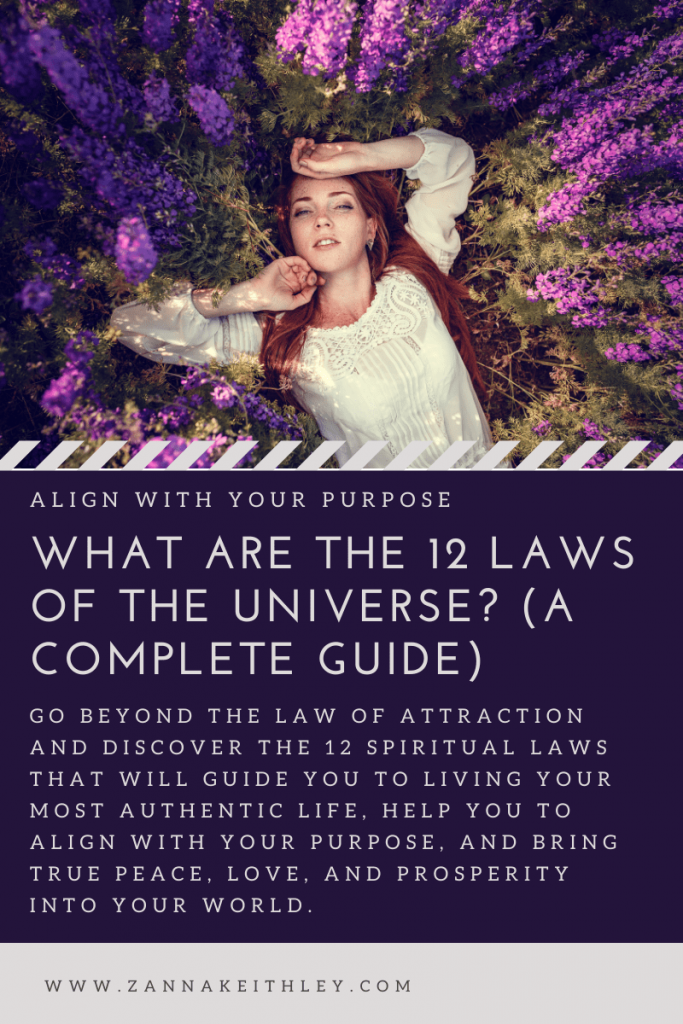
Pin this for later! What Are the 12 Laws of the Universe? (A Complete Guide) 
Zanna Keithley is an author, poet, and social media content creator who writes short prose dedicated to inspiring readers to follow their dreams, trust their intuition, and create beautiful and fulfilling lives. You can find her original writing on Instagram @zannakeithley.
-
Sacred Self-Care For The 7 Chakras (A Complete Guide)
In this article, learn the importance of self-care for healing your body’s energy centers, and discover meaningful self-care practices for each of your body’s seven main chakras.

Pin this for later! Sacred Self-Care For The 7 Chakras (A Complete Guide) What Are Chakras?
Chakra is a Sanskrit word meaning “wheel” or “disk.” A commonly accepted definition for the word chakra is a wheel of energy in your body.
You can also think of it like a vortex of energy within you. This vortex isn’t an actual physical thing, though. Rather, it’s energy that you experience through feelings, sensations, and your deep inner knowing.
So what do these vortexes, or energy centers, do?
Within you, you hold universal life force, or prana. Ideally, your life force is always flowing effortlessly through your body. You can think of it kind of like you have your own transportation infrastructure inside you. Your life force is the vehicle moving through you.
This vehicle travels along roads called nadis. (You have thousands of these roads, or energy channels, inside of you.)
And these nadis meet at intersections, which are your chakras.
So ideally, everything in your infrastructure is working perfectly. Roads are open. Intersections are unblocked. Energy flows seamlessly.
But just like an actual road or highway, everything doesn’t always work as perfectly as we’d like. Sometimes, intersections get blocked. Roads get backed up. Cars get stuck.
This happens when your energy gets stuck somewhere inside you. For instance, let’s start with your root chakra, also known as your first chakra, located at the base of your spine.
The root chakra is your body’s energy center for stability, safety, strength, security, groundedness, and inner peace. Your root chakra acts as your foundation. This is where you build your strength, power, and steadiness so that the flow of energy can easily move freely throughout your entire body.
Now, let’s say your fundamental needs like food, shelter, warmth, and safety aren’t being met. Or maybe you feel financially insecure or uncertain about potential job layoffs. When these things happen, your energy gets stuck at this energy center, unable to move freely through this intersection.
This results in energetic imbalances, which can manifest as feelings of insecurity, anxiety, depression, disconnection, fear, worry, and restlessness.
This is just the beginning of understanding your chakra system. If you’d like to learn more, I definitely encourage you to check out my chakra articles, which include affirmations, journal prompts, and healing practices for your seven main energy centers.
And if you’re interested in exploring more about chakras and want to begin your own powerful journey of chakra healing, you can check out my Chakra Healing Bundle, which contains a Chakra Healing eBook, Chakra Healing Workbook, and 8-Week Chakra Healing Guide. These healing resources are designed to help you begin a profound journey into aligning with your highest self, healing your soul, and cultivating unconditional self-love.
- You May Also Like: 8 Best Chakra Books For Profound Energy Healing
Self-Care For The Chakras
So why is self-care important for activating, opening, and healing your chakras?
Each energy center is connected to specific emotional, physical, mental, and spiritual attributes.
For instance, as mentioned above, the root chakra is associated with security, stability, and strength. Your sacral chakra, which is your second chakra, is associated with creativity, passion, joy, and prosperity. (You have more than seven chakras, but we tend to focus on the seven below as being your seven “main” energy centers.)
In order to ensure your energy is flowing freely within you, it’s important to regularly check in with yourself.
Has your creativity been stifled lately? Have you been engaging in too much work and not enough play? Is your sense of security shaken? Do you feel like you can’t speak your authentic truth? Do you feel disconnected from yourself, others, and the universe as a whole?
By pinpointing any potential blockages within, you can make space to spend a little extra time with this part of your inner being. Self-care is a profound way to do this.
Below, you’ll find self-care practices for each of your body’s energy centers. I’ve also included the balanced and imbalanced attributes for each of your main chakras. If you meet the balanced attributes, your energy is likely in a good place. But if you meet more of the imbalanced attributes, you may want to spend some extra time engaging in self-care practices associated with that energy center.
- You May Also Like: 30-Day Self-Care Challenge (Free Printable)
Root Chakra Self-Care
- Sanskrit Name: Muladhara (Mula: “root”; Adhara: “support” or “base”)
- Location: Base of spine
- Color: Red
- Balanced Attributes: Secure, Grounded, Strong, Centered, Stable, Steady, Safe, Peaceful, Supported, All Basic Needs Are Met
- Imbalanced Attributes: Insecure, Anxious, Depressed, Scattered, Disconnected, Restless, Fearful, Cynical, Neglected, Worried
- Fundamental Need: Survival
Connect to the Earth
The root chakra is associated with the earth, and one of the most powerful self-care activities you can perform is to immerse yourself in nature and let your bare feet touch the ground.
You might also find a quiet spot to sit outside where you can journal, meditate, or just simply be. Or if you’re a gardener, you might choose to go outside and work in your garden, allowing your bare hands to dig into the earth.
Nature is one of the universe’s greatest healers. When you take the time to connect with the earth, you connect with your roots, your foundation, and the truest, most authentic you.
Focus on Your Basic Needs
When we think of self-care, we often think of pampering activities such as spa days and pedicures. But self-care is intrinsically something more. Whenever you brush your teeth, take a shower, or schedule a medical appointment, you’re practicing self-care. And taking care of your basic needs is the foundation of self-care. These needs include food, water, warmth, rest, security, and safety.
Have you been getting enough calories? Have you gotten enough sleep? Write a list of all the things that you need in order to meet your basic, foundational needs, and regularly make sure you’re meeting your needs.
Other Practices
- Meditate
- Repeat root chakra affirmations
- Practice breathing exercises, such as alternate nostril breathing
- Express gratitude for everything in your life that contributes to an open root chakra, such as your home, blankets, food, access to clean water, and the locks on your door. (For more ideas, here’s a list of 500 things to be grateful for today.)
- Practice yoga. Include the following poses (asanas): Mountain Pose, Downward Dog, Tree Pose, Lunge Pose, Warrior II
Sacral Chakra Self-Care
- Sanskrit Name: Svadhishthana (Sva = “self”; shthana = “place”)
- Location: Lower abdomen (below your navel)
- Color: Orange
- Balanced Attributes: Creative, Joyful, Playful, Prosperous, Stable, Sexual, Sensual, Passionate, Open, Energetic, Honest, Forgiving
- Imbalanced Attributes: Lack of Creativity, Unstable, Insecure, Anxious, Scattered, Lazy, Fearful, Disconnected, Depressed, Unmotivated, Negative, Lack of Sensuality
- Fundamental Need: Emotional flow, desire, sexuality
Get Creative
How often do you make space in your life for creativity that has absolutely no end goal? It’s not meant to be productive. It’s not meant to be good. And it’s definitely not meant to be perfect. It’s just pure, unrestricted, joyful creativity.
Embracing your creative flow is one of the most beneficial practices you can do when working with your sacral chakra. Do something you feel good about that isn’t related to your job and that you don’t feel the need to be perfect when doing. Let it be both messy and beautiful.
Spend Time In Water
The sacral chakra’s associated element is water, and there are several powerful ways you can use water to connect with this energy center. My personal favorite practice is to take a luxurious bubble bath. When your sacral chakra is open and balanced, you have a positive relationship with your body and embrace your own divine sensuality. A warm bubble bath is the perfect way to honor your body.
Of course, you can also find water all over nature, which is one of our greatest teachers and healers. Oceans, lakes, rivers, and streams all offer opportunities to connect with your sacral chakra. If you’re not too keen on getting in the water, that’s okay. Even sitting near the water while meditating, answering sacral chakra journal prompts, or simply sitting in silence can offer meaningful healing.
Other Practices
- Dance
- Smile and genuinely compliment yourself every time you look in the mirror
- Meditate
- Repeat sacral chakra affirmations
- Write a letter to your inner child encouraging yourself to play and use your divine imagination.
- Practice yoga. Include the following poses (asanas): Pigeon, Butterfly, Frog, Cobra, Goddess Squat
Solar Plexus Chakra Self-Care
- Sanskrit Name: Manipura (“City of Jewels”; sometimes translated as “Lustrous Gem”)
- Location: A couple inches above the navel/Below the chest
- Color: Yellow
- Balanced Attributes: Confident, Positive, Joyful, Empowered, Driven, Motivated, Collaborative, High Self-Esteem
- Imbalanced Attributes: Lack of Confidence, Negative, Fearful, Low Energy, Indifferent, Unmotivated, Competitive, Low Self-Esteem
- Fundamental Need: Self-worth
Fire and Sun
The solar plexus chakra’s element is fire, so this is the perfect time to have a (safe) bonfire with friends or enjoy some family time by the fireplace. You could also combine some time by the fire with other self-care practices, like meditating. If it’s summer and you’re not keen on starting the fireplace, another powerful practice to balance your solar plexus is to go for a walk or have a picnic in the sun.
Write A Self-Love List
Write out a list of positive qualities you love about yourself, and describe why you love each of those things. For instance, “I love my smile because it lights up a room. When I smile, I notice that other people smile, too.” Focus on both your internal and external qualities. There’s no room for negativity here. Compliment yourself. Focus on the positive. Remember that you are worthy and deserving of unconditional joy and love.
If you need more help with this, you can check out my post on how to fall in love with yourself more each day.
Other Practices
- Meditate
- Repeat solar plexus affirmations
- Practice color therapy by immersing yourself in all things yellow. Eat yellow foods such as bananas, pineapple, yellow peppers, and squash. Light yellow, lemon-scented candles. Wear yellow. Paint with the color yellow. Color therapy is helpful for working with any of your chakras, but I especially love it for working with the solar plexus chakra because yellow is such a bright, happy color.
- Practice yoga. Include the following poses (asanas): Warrior I, Full Boat Pose, Bow Pose, Reverse Triangle Pose, Warrior III, Plank
Heart Chakra Self-Care
- Sanskrit Name: Anahata (“Unstruck”)
- Location: Heart/Center of chest
- Color: Green
- Balanced Attributes: Loving, Loveable, Peaceful, Compassionate, Empathetic, Trustful, Open-Hearted, Serene, Understanding, Kind
- Imbalanced Attributes: Unloved, Unlovable, Lonely, Depressed, Indifferent, Judgmental, Distrustful, Self-Isolates, Spiteful, Selfish
- Fundamental Need: Love
Walk in Nature
The color of the heart chakra is green, and its element is air. Combine these attributes by taking a long, cleansing walk in nature, breathing in the fresh air. If you live near a forest or a beautiful, green meadow, this is ideal, but just taking a walk and getting some fresh air can do wonders for healing your heart chakra. You might also go to the beach on a breezy day and let the cool wind dance across your skin.
“What Feels Like Love To Me?”
If you’re feeling disconnected from yourself, ask yourself, “What feels like love to me?” This can vary depending on the day.
For instance, sometimes love feels like eating your grandma’s homemade chocolate chips cookies, while other days, love feels like a big salad filled to the brim with fresh veggies. Sometimes, love feels going on a hike, and other times, love feels like staying in and cozying up on the couch with a good book.
Ask yourself what feels like love to you and let your heart guide you to the answer.
Other Practices
- Meditate
- Repeat heart chakra affirmations
- Drive with the windows down and let the air blow against your skin
- Practice any form of self-care that feels especially loving and nurturing to you
- Practice yoga. Include the following poses (asanas): Camel Pose, Wheel Pose, Handstand, Fish Pose, Extended Puppy Pose, Bridge Pose, Cow Face Pose
Throat Chakra Self-Care
- Sanskrit Name: Vishuddha (“Especially pure” or “Purest”)
- Location: Throat/Center of Neck
- Color: Light Blue
- Balanced Attributes: Communicative, Calm, Honest, Peaceful, Decisive, Expressive, Patient, Authentic, Centered, Good Listener
- Imbalanced Attributes: Excessively Shy, Withdrawn, Dishonest, Loud, Indecisive, Inexpressive, Impatient, Disingenous, Moody, Insincere
- Fundamental Need: Expression
Find A Big, Open Space Outdoors
Yep, nature again. If it’s a nice day, find a quiet spot outside where you have plenty of space. Lay on the ground and watch the sky. You could also meditate outside, sketch the scenery, or write a letter. If you hear any nature sounds, like birds chirping or a babbling creek, allow yourself to close your eyes and just listen. (Listening is as important for your throat chakra as speaking.)
Write a Letter
Write an open letter to somebody in your life: a current or past partner, friend, relative, boss, coworker, or even an acquaintance. What have you always wanted to say to this person but never found the courage or the right words?
Write your truth in this letter. Allow yourself to release any negative emotions that your body may have been carrying from holding in your truth. (You don’t have to actually send this letter. Simply writing the words may be enough to release this stagnant energy.)
Other Practices
- Meditate
- Repeat throat chakra affirmations
- Sing
- Schedule a date with your best friend and practice speaking your authentic truth while being an active, engaged listener
- Practice yoga. Include the following poses (asanas): Cobra Pose, Fish Pose, Camel Pose, Bridge Pose, Rabbit Pose, Shoulder Stand, Seated Fold
Third Eye Chakra Self-Care
- Sanskrit Name: Ajna (“Beyond wisdom.” Can also be translated as “Perceive” or “Command.”)
- Location: Center of Forehead/Between Eyebrows
- Color: Indigo (Also associated with purple.)
- Balanced Attributes: Intuitive, Imaginative, Insightful, Perceptive, Open-Minded, Sense of Clarity, Mentally Strong, Trusting
- Imbalanced Attributes: Lack of Intuition, Confused, Unimaginative, Fearful, Unable to Focus, Close-Minded, Scattered, Distrusting
- Fundamental Need: Insight and intuition
Immerse Yourself in Light
The third eye chakra’s element is light, so embrace opportunities to sit or walk in the sunshine. If you have a sun room or any open rooms with big windows in your home, take advantage of this space by sitting in silence, reading, or doing some crossword puzzles/logic games. You might also try sitting or meditating under the moonlight if it’s especially bright out.
Tap Into Your Intuition
Your intuition is that deep inner knowing that whispers inside of you. We all have one, but like a muscle, it becomes stronger when we actively work with it.
The first step to working with your intuition is to quiet your mind and simply listen. You can’t hear what that inner voice is trying to tell you if you’re constantly immersed in noise. The quickest and most profound way to start connecting with your intuition is to let silence be a normal part of your life. If you can, see if you can step away from the outer noise and immerse yourself in silence.
Here are some more practices that will help you tap into your intuition.
Other Practices
- Meditate
- Repeat third eye chakra affirmations
- Daydream
- Do some logic puzzles and games that actively engage your mind
- Practice yoga. Include the following poses (asanas): Downward Facing Dog, Child’s Pose, Extended Puppy Pose, Seated Forward Bend, Head to Knee Pose, Pyramid Pose
Crown Chakra Self-Care
- Sanskrit Name: Sahasrara (“Thousand-petaled”)
- Location: Top of Head
- Color: Violet (White is often associated with this chakra as well.)
- Balanced Attributes: Spiritual, Enlightened, Trusting, Peaceful, Creative, Focused, Blissful, Present, Connected to Higher Power
- Imbalanced Attributes: Cynical, Close-Minded, Lack of Faith, Frustrated with Life, Forgetful, Unfocused, Lonely, Scattered, Disconnected
- Fundamental Need: Connection to the divine
Communicate with the Universe
You can call this prayer or simply speaking to the Universe. If you’re feeling low, heavy, or detached, find a safe spot where you feel comfortable being vulnerable.
Then, speak. Surrender your heaviness. Let it out.
If it’s more comfortable for you to write your thoughts and feelings, write it in a letter. Then, allow whatever comes forth to be, exactly as it is. Trust that the Universe is supporting you in every way possible.
Detox/Fast
Your physical body needs food for nourishment, but your spiritual self doesn’t really need food in the same way. Unlike your other energy centers, which have associated foods that allow for healing, the crown chakra is best healed by detoxing or fasting.* This helps you to clear your mind while flushing out toxins that may be harming your body. When detoxing, focus on fresh fruits, veggies, and lots of water.
*If you choose to detox or fast, just make sure you’re following the proper guidance of a medical professional.
Other Practices
- Meditate
- Repeat crown chakra affirmations
- Go inward. Try to find an open field or special spot that gives you lots of space to think, turn inward, and simply be. If you feel safe and comfortable enough to meditate outdoors, this would be the perfect time to meditate. If the weather allows, journaling outdoors is also another powerful practice for healing.
- Practice yoga. Include the following poses (asanas): Lotus Pose, Corpse Pose, Tree Pose, Headstand, Fish Pose, Standing Prayer Backbend
For more resources on spirituality, meditation, manifestation, and all things self-love, connect with me on Instagram and Pinterest, where I’m posting positive affirmations and empowering messages daily.
More Articles For You
- How To Love Yourself More Each Day
- 9 Healing Crystals For New Beginnings
- 8 Best Self-Love Workbooks To Read This Year
- 11 Beautiful Poetry Books About Self-Love & Acceptance
- 30 Profound Journal Prompts For Spiritual Growth

Pin this for later! Sacred Self-Care For The 7 Chakras (A Complete Guide) 
Zanna Keithley is an author, poet, and social media content creator who writes short prose dedicated to inspiring readers to follow their dreams, trust their intuition, and create beautiful and fulfilling lives. You can find her original writing on Instagram @zannakeithley.
-
How To Tap Into Your Intuition (The Ultimate Guide)
In this article, learn how to tap into your intuition, plus discover what your intuition should feel like, how your intuition relates to manifestation, and what to do if you don’t like what your intuition is telling you.
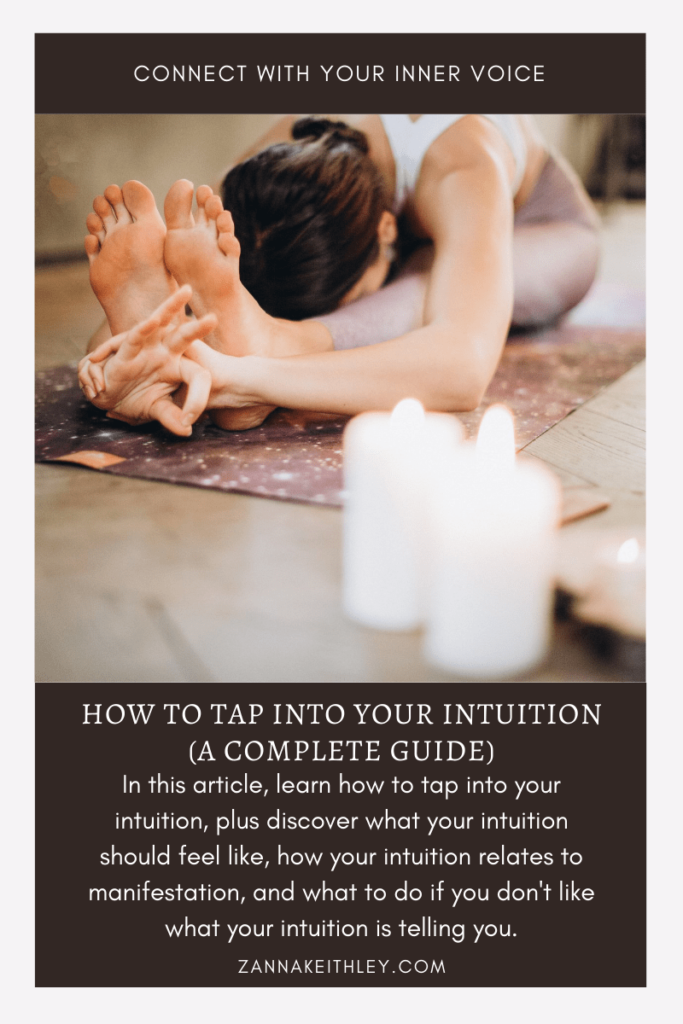
Pin this for later! How To Tap Into Your Intuition (A Complete Guide) What Is Your Intuition?
In many ways, your intuition is the least glamorous thing about you. It isn’t showy. It doesn’t like to be the center of attention. It’s so subtle, in fact, that many people question whether theirs works.
Right away, I’m here to tell you that you do have one, and it does work. You’ve probably even encountered it recently.
We all possess a deep inner knowing softly whispering inside of us—we just don’t always listen to it because our cognitive minds are so busy worrying, stressing, second-guessing, developing worst-case scenarios, and overthinking.
The second your intuition nudges you to do something out of the norm, your logical brain says, “Hold up, but what about all these 5,000 things that can go wrong?”
And sometimes, you actually hear your intuition loud and clear, but you don’t really want to listen to it.
- Your intuition may tell you it’s time to break up with your partner, but you’re terrified of change and don’t want to cause another person pain.
- Your intuition may tell you not to accept that seemingly perfect job with the great pay, but how could you turn down that money?
- Or your intuition may tell you that you need some more time to yourself before you dive into another relationship, but you really hate being alone.
If you want to strengthen your relationship with your intuition, there are some key practices you can start doing today.
In This Article
- How To Tap Into Your Intuition
- What Does Your Intuition Feel Like?
- Your Intuition & Manifestation
- What If You Don’t Like What Your Intuition Is Telling You?
How To Tap Into Your Intuition
Below, find six practices to help you tap into your intuition, plus a few additional exercises you can try. Consistently following these practices will strengthen your connection with your intuition and help you tap into this deep inner knowing with ease.
Quiet Your Mind
The first step to take to start connecting with your intuition? Listen.
You can’t hear what your inner voice is trying to tell you if you’re constantly immersed in noise.
The quickest and most profound way to start connecting with your intuition is to let silence be a normal part of your life.
If you have a daily meditation practice already, you may already be benefitting from these regular encounters with silence and stillness.
And if you don’t have a meditation practice, that’s okay. I know meditation may seem overwhelming at first. This is partially due to the myth that meditation requires you to have no thoughts. This is one of the biggest misconceptions about meditation and why many people believe meditation isn’t for them.
But if you listen to just about any meditation teacher, they’ll tell you the same thing: meditation is not about clearing your mind of thoughts. If it was, I’m not sure any of us, not even the most advanced meditators, would ever succeed. The last thing we want to do is suppress or evade our own thoughts.
At its heart, meditation (especially practices rooted in mindfulness) is about non-judgmental observation, conscious awareness, and gently rooting yourself in the present moment. It’s a chance to step away from the external noise and come home to yourself for a little while.
And this is where your intuition shines: in the quiet places where you can simply be.
The paradox of using meditation to connect with your intuition is that you’re not actively going to try to connect with your intuition during your meditation. If you sit in silence and try to force something to come forward, you’re likely going to put excess pressure on yourself; in turn, this often causes frustration and anxiety.
The key is patience. Sit in stillness for ten minutes today. Then, sit in stillness for ten minutes tomorrow. Day after day, keep sitting in stillness for ten minutes at a time. Don’t try to force anything. It will come on its own. All of the mental clutter will start to clear up, and your intuition will come forward.
- You May Also Like: Meditation Practices For Beginners
Practice Mindfulness
One of the biggest barriers to connecting with your intuition is being anywhere but where you are right now.
What do I mean by this?
As you go about your day, it’s easy to get lost in thoughts about the past or future. You might find yourself replaying yesterday’s events or worrying about the days ahead. When this happens, your mind becomes so busy with troublesome thoughts, you lose your connection with that quiet voice within.
Mindfulness is the key to returning to this moment right now and getting in touch with your inner knowing.
First, let’s take a step back and talk about mindfulness itself. What is it, and why is it so important?
Mindfulness is non-judgmental, conscious awareness in the present moment. This means being aware of what’s happening within and around you in this moment. How does your body feel? Where do your thoughts stray? Are you experiencing any anxiety or tension? What can you perceive with your five senses?
The key here is not to judge anything you notice. Don’t label any of it as right or wrong. Just notice.
So why is mindfulness important when it comes to connecting to your intuition?
Mindfulness allows you to become aware of what’s happening within and around you in this present moment.
Remember, your intuition isn’t flashy. Every once in a while, it might scream at you, like when it knows you might be walking into a dangerous situation. But for most of the daily stuff, it tends to remain soft and quiet, like a soft whisper deep inside you.
You can’t always expect it to speak up louder; instead, you must consciously step away from all the mental chatter so you can hear it.
Mindfulness quiets the noise of your worries, fears, judgments, and daily stresses so you can hear what’s really going on in the deepest parts within.
If mindfulness is new for you, you can check out some helpful mindfulness exercises you can try to start practicing mindfulness throughout your day.
Truly, I can’t emphasize enough how important mindfulness is in connecting to your intuition. It may feel like this is a slow process, but I promise, if you consistently practice mindfulness techniques for a month straight, you’ll begin noticing shifts within yourself.
This is the bridge to connecting to that quiet voice within: being consciously aware of what’s happening inside you in this present moment, without judging what’s going on. Simply listening. Breathing. Being.
Cultivate Calm
I’ll keep this one short: clarity comes with calm.
People don’t usually make good choices when they’re feeling stressed, worried, angry, or depressed.
Connecting with your intuition requires you to first do the two things I mentioned above: quiet your mind and practice mindfulness. Mindfulness will allow you to recognize that you’re feeling “low” or “off.” By recognizing your own low mental state, you can choose not to make any big decisions at that moment.
Conversely, it will help to bring clarity when you’re experiencing a more positive mental state. This is when the magic happens. When you’re experiencing a sense of calm and inner peace, that’s when you’re in greatest alignment with your inner knowing.
Start consciously working with your intuition during moments when you’re feeling really good. I started with walks around my neighborhood. During these walks, I always felt calm, grounded, and connected to my higher self. So I started asking my intuition to guide me when I should turn and where I should walk next.
Most of the time, nothing really happened. And that’s completely okay. Sometimes, when you work with your intuition, nothing will actually seem to happen around you. This is normal. Just because nothing happens around you doesn’t mean you’re doing anything wrong.
Keep practicing in these moments. This is preparing you to trust your intuition for those bigger moments when you do feel that soft nudge within.
Practice Picking Up Signals From People Around You
Think of the people you spend the most time with: family, friends, coworkers. How often have you taken one look at a person you’re close with and known that something was wrong?
What about those times when it’s less obvious? Someone may seem fine on the surface, but you can just tell that something’s off. They seem distant. Distracted. Heavy.
Start approaching your daily interactions with the intention to pick up on any underlying feelings that may be going on beneath the surface. When you begin your interaction, ask yourself, “What do I feel from this person right now?” See if you can name that underlying feeling.
As you continue to practice this, it will become easier to tap into that feeling within. In time, this will expand into other areas of your life. Not only will you be able to connect with your intuition when interacting with other people, but you’ll feel those subtle hunches when it comes to your own life path.
Take Days Off
This directly correlates with what we’ve discussed in some of the different points above: make space for stillness, step back from the noise, and give your soul a chance to take a deep sigh of relief.
If you’re currently immersed in a cycle of feeling stressed and busy all the time, you’re going to have a difficult time connecting with your inner knowing. See if you can plan days throughout your month where you don’t have anything on the to-do list. Do things that make you feel calm and at ease.
Again, you don’t have to actively try to make your intuition come forward. Let it come to you.
And to add to this, spending time in nature and taking social media breaks will also help you escape all the outer noise and connect to your inner self. You’ll often hear about these practices when it comes to self-care and taking care of your mental and emotional health, but they have the added benefit of also helping you develop and strengthen your intuition.
Connect With Your Body
You’ll experience your intuition in goosebumps, shivers, chest pressure, and inner aches. You’ll also experience it in more subtle feelings and hunches.
The better connected you are with your body, the more you’ll be able to pick up on subtle changes happening inside you.
Yoga and meditation are two practices you can use to connect with your body. You can also practice simply standing with your two feet on the ground, closing your eyes, and connecting with how you feel.
Connection also comes just by paying attention.
Take moments to pause throughout the day and ask, “How does my body feel right now?” Answer without judgment. The more you practice this, the easier it will become to pick up on any understated shifts that happen within.
A Few More Practices
In the long-term, mindfulness and meditation are the two practices that will have the most profound effect on how you connect with your intuition. However, if you want to start working with your intuition more closely right away, there are plenty of other meaningful practices you can try today. Here are a few examples:
- One of my favorite things to do is go into a store that has crystals and gemstones and let my intuition guide me to pick out a new gemstone for myself. (The small ones are often as inexpensive as $1, so this doesn’t have to cost a lot of money.) Once I pick out my stone, I’ll take it home and read about the spiritual meaning of that gemstone. Then, I’ll think about why my intuition may have led me to that stone. Is it because of the spiritual meaning, or does it simply have a feeling of positive energy? There’s no right or wrong answer here. It’s just a fun and easy practice for developing your intuition, plus you get a new crystal or gemstone from it. You also don’t exclusively have to do this practice with crystals. Pick something you like that makes you feel good, like flowers, books, jewelry, or candles.
- Working with oracle cards is also a great way to develop your intuition. Pick a card, and before you consult a guidebook, let your inner knowing interpret the meaning of the card.
- You might also start keeping a dream journal. Try to write what you remember about your dream shortly after you wake up. (The sooner, the better.) Consider if your intuition was trying to tell you something within your dream. You might also see if your intuition can help you uncover any deeper meanings or symbolism in the dream itself.
- A pendulum is another great tool for developing your intuition. It’s most often used to gain insight and clarity when there are areas of uncertainty in your life. Anytime you have a question and are looking for help or advice, you can use a pendulum to receive guidance from a higher power.
What Does Your Intuition Feel Like?
Your intuition can be so subtle, it’s often difficult to describe what it feels like.
For a situation in which you might be putting yourself in danger, the feeling will be louder and more obvious. Your heart will race, your palms will get sweaty, and that voice within will yell at you to turn around and find safety. Sometimes, your breath may quicken, and you’ll get shivers down your spine.
When you encounter these experiences, don’t question these feelings. And especially don’t question whether you’re overreacting. Err on the side of caution. Trust what you feel.
Most situations in life aren’t like this, though–especially when it comes to intuitive nudges you have about your own life path. Your intuition usually doesn’t speak in shouts but in whispers.
And often, it’s less of a feeling and more of a knowing. You’ll experience a sudden understanding: clarity that just comes to you, often unexpectedly. If something is off (maybe with a relationship or a business deal), there will be a part of you that just knows.
Your intuition comes from your heart’s consciousness, which isn’t always as easy to grasp as the logic and reason of your mind’s consciousness. Thus, you may try to talk your way out of whatever it is that you’re feeling. You may keep trying to reason with yourself and follow your logical mind.
And it’s okay; most of us have done this at some point in our lives. We’ve been taught to trust logic and reason over intuition and inner knowing. And that’s what can make following your intuition feel kind of scary—because it requires you to alter your mindset. It’s less about thinking your way forward and more about feeling your way forward.
Here are a few of the ways in which you might experience your intuition:
- An unexplainable “knowing”
- A feeling of “rightness”
- Clarity
- Ease
- Hunches
- A quiet voice within
- A recurring thought
- Goosebumps
- Shivers
- Racing heart
- An inner ache
- Pressure in your chest
- Physical discomfort
- Emotional discomfort
Your Intuition & Manifestation
So what role does your intuition play in manifestation?
First, let’s consider how manifestation works:
- You set an intention based on the authentic, deeply felt dreams that have been placed in your heart.
- You communicate this intention to the Universe. Your positive vibrations are one way of communicating this intention, as by vibrating at the frequency of your desires, you express that you’re ready to receive more of this good-feeling thing.
- The Universe works behind the scenes to set everything in motion. It communicates back to you in the form of messages, synchronicities, and most importantly, your own intuition. Being in the vibration of what you desire allows you to receive these signs and inner nudges with clarity. (In contrast, being in a state of stress, worry, and anger will cause you to miss these signs and feelings.)
- Then, you take inspired action based on the communication the Universe has given you. This leads you on your path forward.
The art of manifestation is the art of learning how to communicate with the Universe. You communicate every single day through your vibration. The Universe communicates back to you through your own intuition.
So if you’ve set an intention, that means signs, synchronicities, and inner nudges are going to come. Your job now is to listen and take inspired action. Once you do this, you’ll receive your next nudge forward. As you follow this path, you’ll be in divine flow with the Universe, and your manifestations will start to come alive.
I know this might sound like a long process, but I promise, it’s not. Depending on the specific dream, some things could come in months, weeks, days—even hours.
The key is not to worry about when it will come. Release the timeline and continue to focus on how you feel in the present moment. As you step forward on the path, the path will continue to reveal itself, one step at a time.
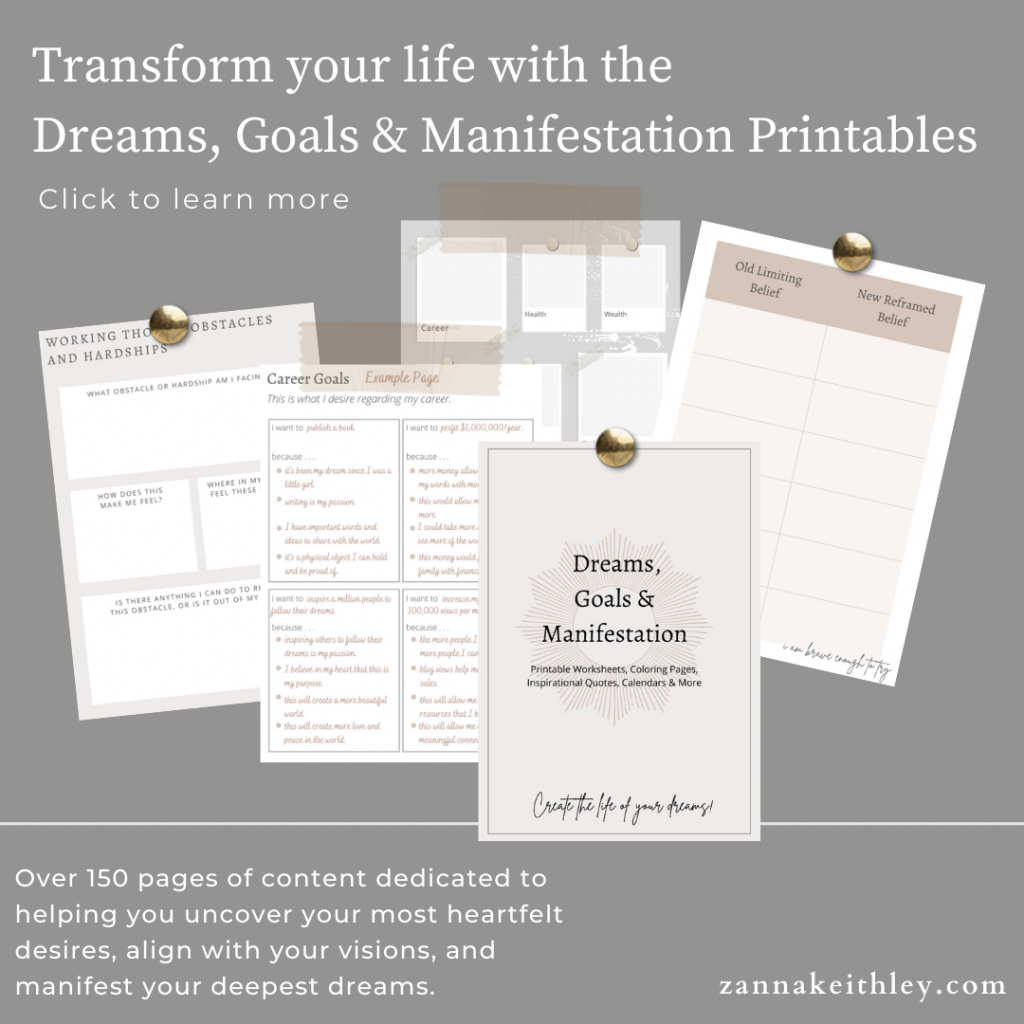
What If You Don’t Like What Your Intuition Is Telling You?
So let’s say you’re trying to manifest something, but your intuition is telling you to do the very opposite of what you think you should be doing. Often, when you want something, it’s because you imagine that outcome will make you feel a certain way.
- You may want to manifest a perfect partner, even though your intuition is telling you to take some time to be single, because you imagine the partner will make you feel loved.
- You dream of getting a prestigious position for a certain well-known company, even though your inner knowing says it’s not as perfect as it seems, because you imagine you’ll finally feel successful and worthy of your parents’ approval.
- Or you want to manifest money to live a more luxurious lifestyle, because you imagine this will make you feel like you’ve finally made it.
There’s nothing wrong with wanting these things for yourself. Nothing. It only becomes a potentially negative thing when it goes against your intuition.
This is when I urge you to step back and re-evaluate your overall goal. Take some time to pause. You can meditate, journal, or take a day off to spend time in nature. Set the intention to understand your desires and what you really want. Allow yourself to shift your vision.
Instead of going after that perfect partner, job, or lifestyle, set an intention to encompass the feelings of being loved, successful, worthy, beautiful, and empowered (or however you imagine this external thing will make you feel) right now in this present moment.
Focus on those feelings, and allow your intuition to guide you forward on your path. Trust that your inner knowing always has the right answers, and believe that the Universe will always take you where you want to go.
It may mean that your perfect partner isn’t supposed to come into your life right now, but you find that you feel so loved anyway, you’re okay waiting.
Even if what your intuition is telling you doesn’t make sense today, it will with time.
If you’re feeling lost, instead of searching for external answers to guide your path, sit in the quiet of your own mind for a little while.
You’ll often find you already have everything you need to take the next step forward.
For more resources on spirituality, meditation, manifestation, and all things self-love, be sure to connect with me on Instagram and Pinterest, where I’m posting positive affirmations and empowering messages daily.
You May Also Like:
- 30 Affirmations For Tapping Into Your Intuition
- What Are The 12 Laws Of The Universe? (A Complete Guide)
- 33 Profound Spiritual Healing Quotes To Guide Your Path
- 30 Journal Prompts For Self Growth (& Deeper Self-Love)
- What Is The Art Of Allowing? (A Complete Guide)

Pin this for later! How To Tap Into Your Intuition (A Complete Guide) 
Zanna Keithley is an author, poet, and social media content creator who writes short prose dedicated to inspiring readers to follow their dreams, trust their intuition, and create beautiful and fulfilling lives. You can find her original writing on Instagram @zannakeithley.
-
35 Mindfulness Affirmations For Stillness & Presence
Discover 35 mindfulness affirmations to help you remain grounded, centered, and rooted in the present moment, no matter what’s happening in your outer world. (And don’t forget to download your free printable affirmations below!)
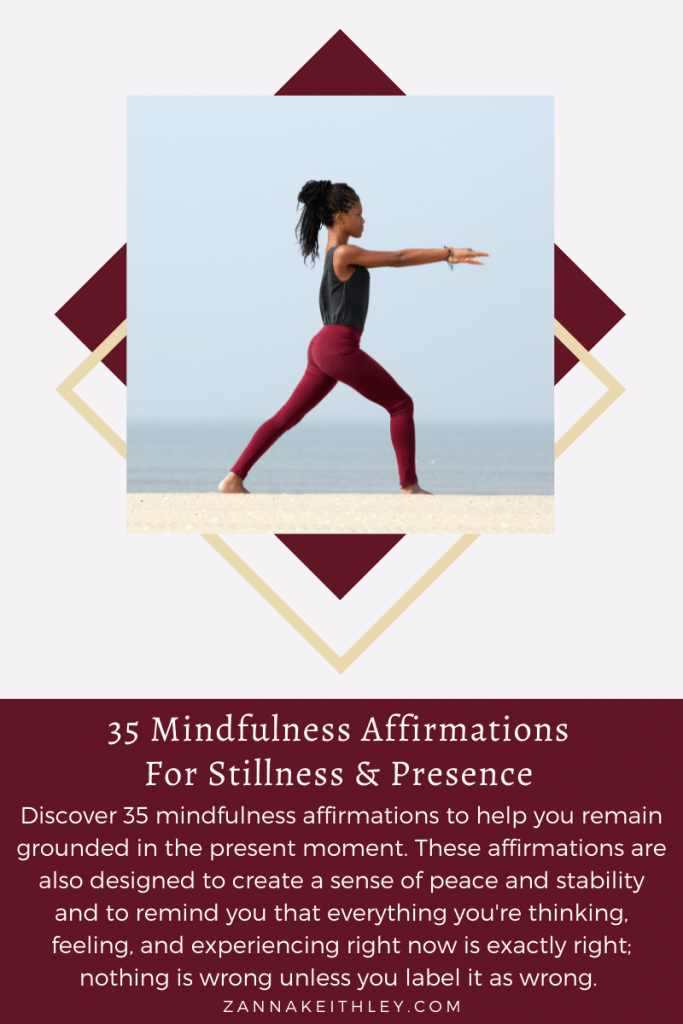
Pin this for later! 35 Mindfulness Affirmations For Stillness & Presence What Is Mindfulness?
The simplest definition for mindfulness is the art of noticing.
To live in a state of mindfulness means to be aware and present in this current moment, allowing you to notice what’s going on within and outside of you. And even more importantly, it’s rooted in non-judgment. That means that instead of forming opinions about what you see, you simply notice with objective, non-judgmental awareness.
To illustrate this, imagine you’re out on a nature walk. Remaining in the present moment, you notice the colors of the trees surrounding you. You notice the clouds hanging out in the sky above you. You notice the sounds the birds make and the coolness of the breeze against your skin.
You also notice how you’re feeling inside—maybe you feel peaceful and serene, or maybe you’re feeling a little stressed and off-center. You acknowledge how you’re feeling and keep walking, accepting these feelings as they are.
This seems simple enough, but consider how easy it is to get lost in your own thoughts: to replay events from the past or worry about the uncertain future. It could be very easy to get through the entire walk without even remembering what you saw, felt, or heard.
Mindfulness allows you to stay grounded in the present moment, but it’s also a little more; in addition to your conscious presence, it also allows you to refrain from criticism or judgment. Through mindfulness practices, you can notice things in your inner and outer worlds without labelling them as right or wrong.
For instance, if you noticed that you felt a little stressed and off-center on your walk, you wouldn’t label it as being “bad.” You would simply allow yourself to accept it, exactly as it is, without an urgent need to fix or change anything.
Mindfulness can be a profound practice for decreasing stress, improving your mood, increasing positive emotions, and improving your overall well-being. Meditation can help you cultivate more mindfulness in your daily life, but you don’t have to meditate to be mindful—mindfulness begins simply by paying attention to what’s happening inside and outside of you (again—without judgment).
Below, you’ll find 35 mindfulness affirmations to help you remain grounded in the present moment. These affirmations are designed to create a sense of peace and stability, reminding you that everything you’re thinking, feeling, and experiencing right now is exactly right; nothing is wrong unless you label it as wrong.
- You May Also Like: 11 Best Mindfulness Books & Journals To Read This Year
Mindfulness Affirmations
- I am here.
- I am present.
- I am grounded.
- In this moment, I have everything I need.
- I am exactly where I am meant to be.
- I am safe and secure.
- I am rooted in this present moment.
- I am strong, steady, and grounded.
- I exist in this moment right now.
- I am grateful for the breath that flows through my lungs.
- My breath is my anchor.
- I am breathing in strength. I am breathing out peace.
- I feel peaceful, grounded, and secure.
- This moment is exactly as it’s meant to be.
- I am experiencing life through all of my senses.
- I allow myself to focus on completing one step at a time.
- My power is in the present moment.
- I am not my thoughts.
- I am not my fears.
- I am viewing the world through the eyes of love.
- All is well in this moment.
- My heart is grateful, and my mind is at peace.
- I will not worry about things I cannot control.
- I focus on what I can control and let go of what I cannot.
- I have the power to overcome my doubts, worries, and fears.
- I allow myself to take things one moment at a time.
- I am grounded, centered, and stable.
- I know deep inner peace.
- This day is a gift, and I accept it with my full presence and undivided attention.
- I release worst case scenario thinking and choose to focus on this present moment.
- When I’m feeling overwhelmed, I allow myself to step back and breathe.
- I notice my thoughts and feelings without judgment or criticism.
- Everything I feel in this moment is exactly right.
- I take care of the future by taking care of the present moment.
- I release my worries and allow myself to find peace in life’s quiet moments.

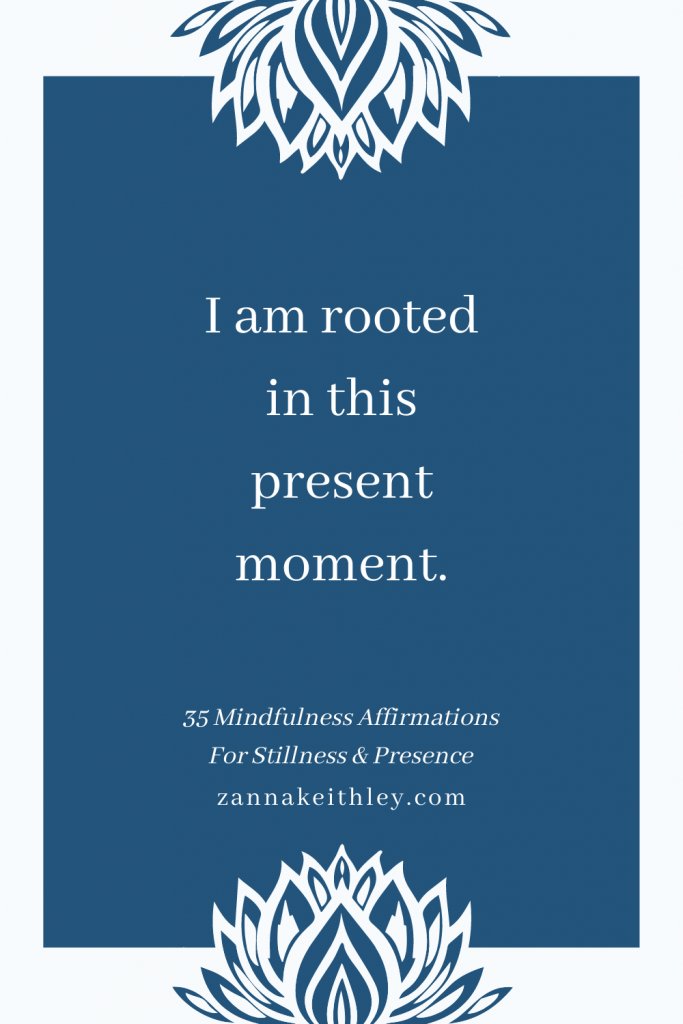
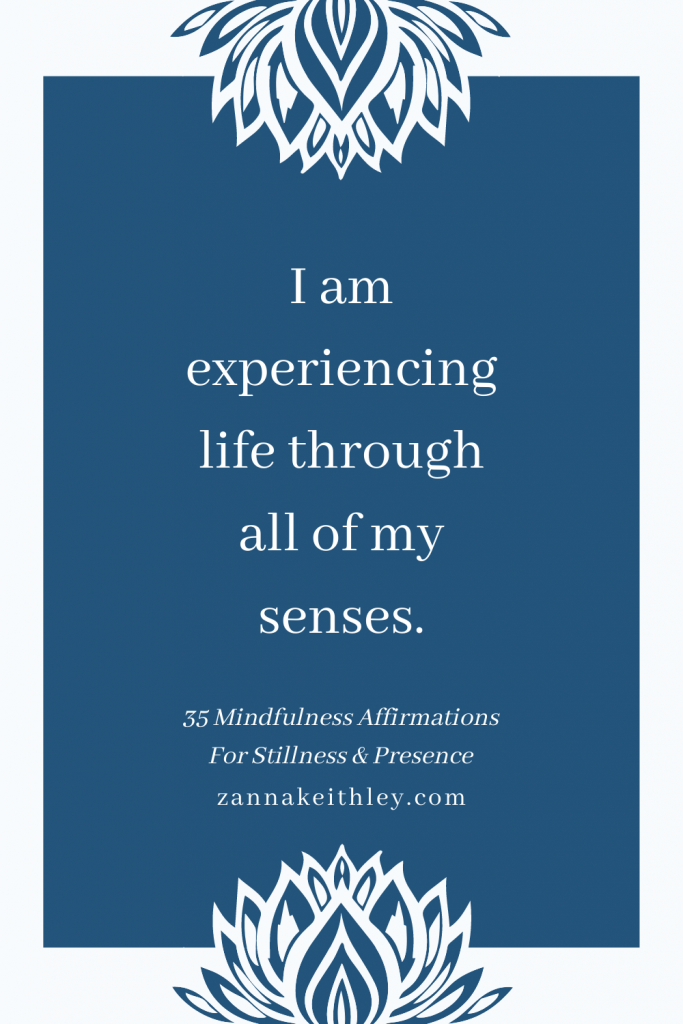
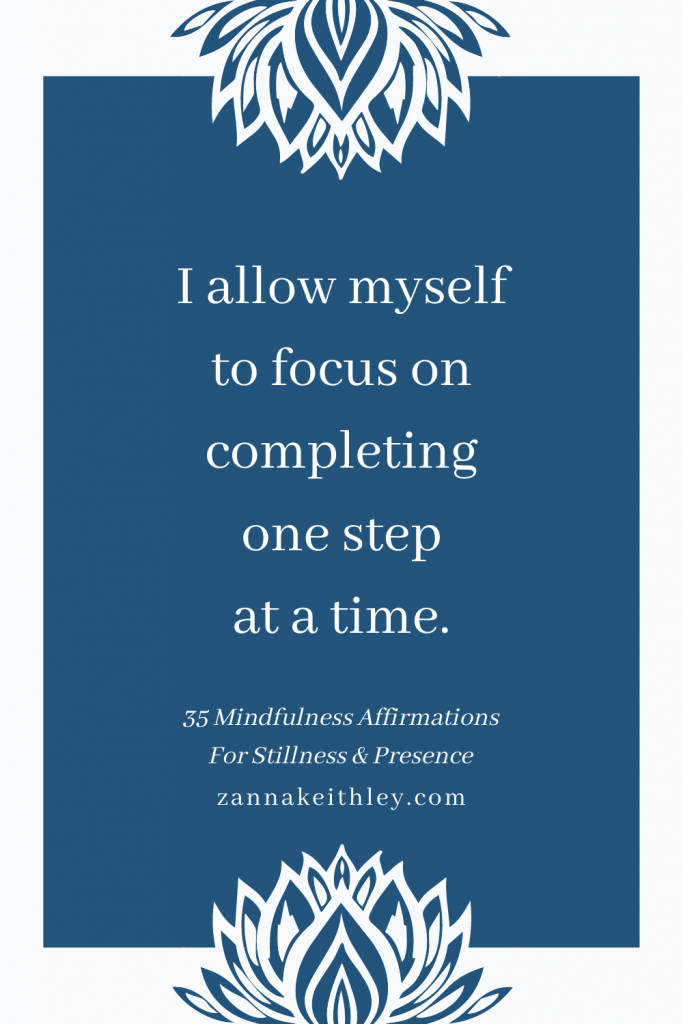
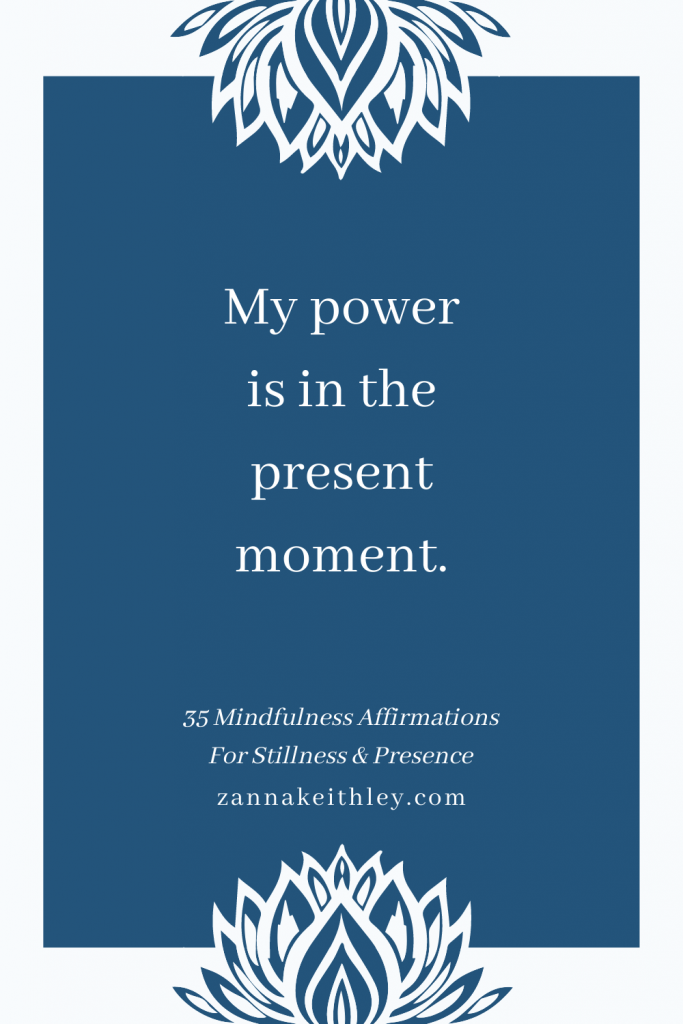
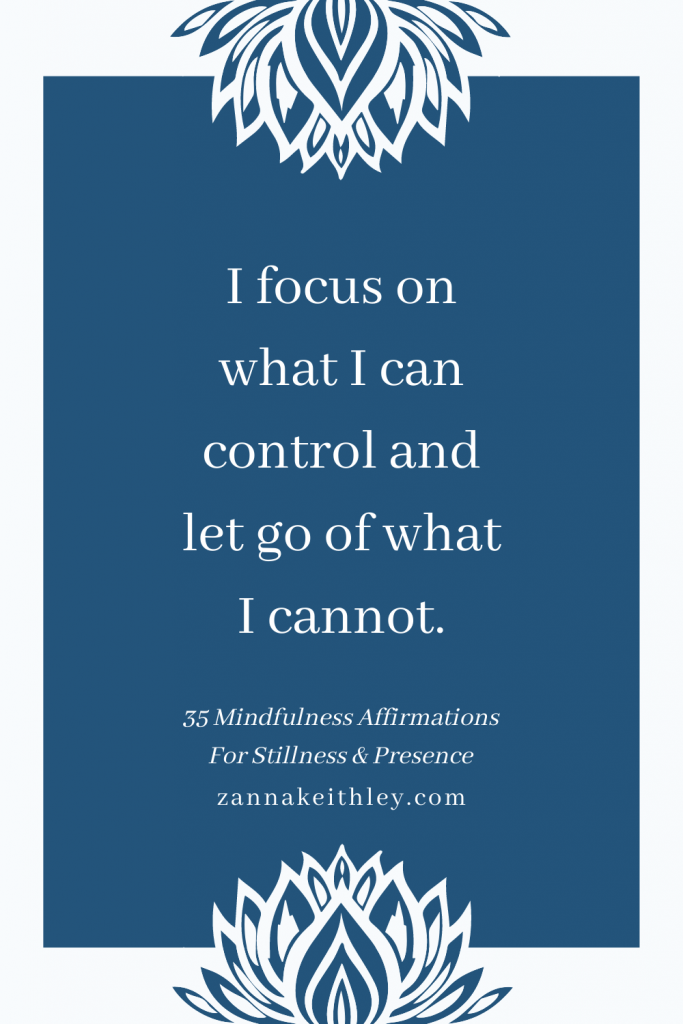
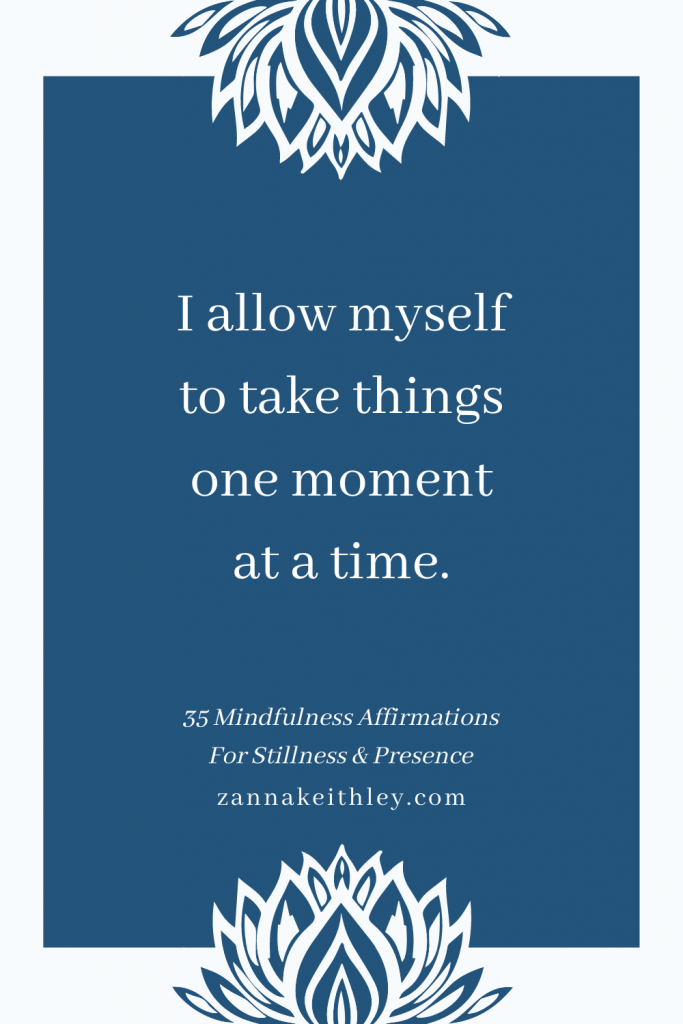
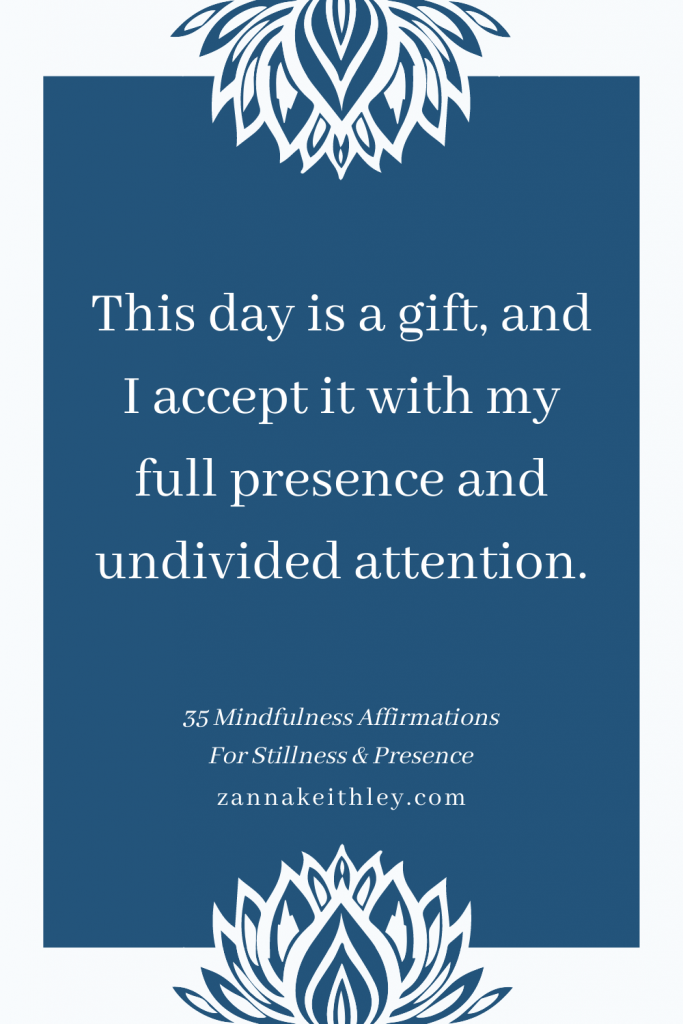
For positive affirmations, self-love tools, manifestation inspiration, and spiritual resources, be sure to follow me on Pinterest and Instagram.
Looking for more? Here are a few more posts you might like:
- How to Start a Meditation Journal (With Links)
- Alternate Nostril Breathing: Benefits & How-To Guide
- Shower Meditation: 6 Ways to Meditate in the Shower
- 50 Meditation Affirmations to Feel Grounded, Peaceful, and Secure
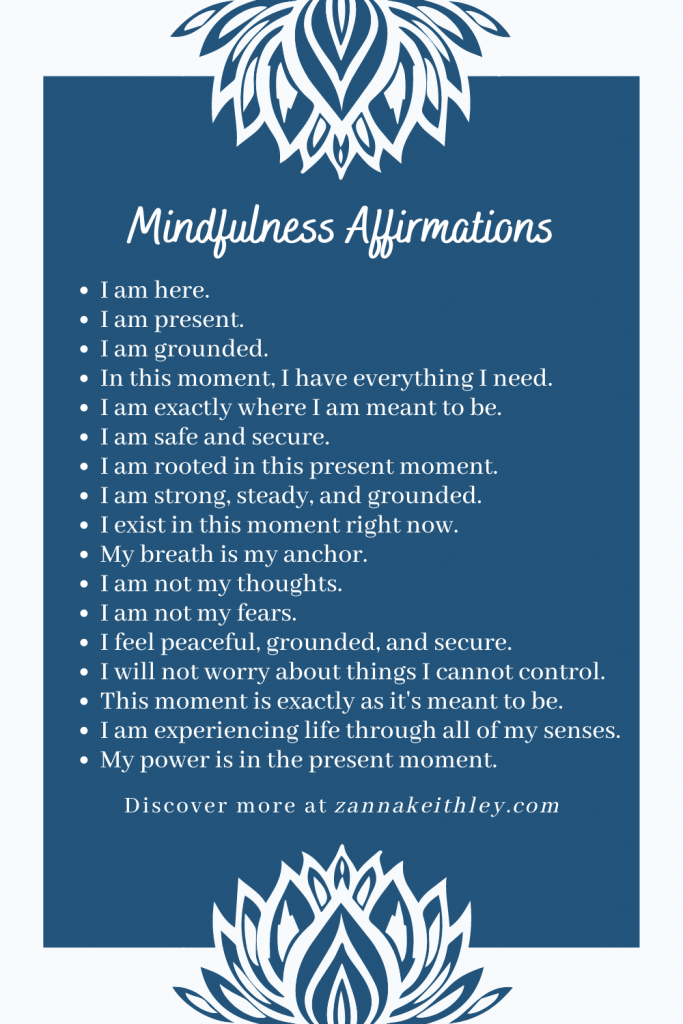
Pin this for later! 35 Mindfulness Affirmations For Stillness & Presence 
Zanna Keithley is an author, poet, and social media content creator who writes short prose dedicated to inspiring readers to follow their dreams, trust their intuition, and create beautiful and fulfilling lives. You can find her original writing on Instagram @zannakeithley.
-
11 Best Mindfulness Books & Journals (for 2024)
In this post, discover 11 of the best mindfulness books and journals to read this year. For beginners and experienced mindfulness practitioners alike, these resources will take you on a profound journey to cultivating mindfulness and inner peace.
Disclaimer: This post contains Amazon links. As an Amazon associate, I earn from qualifying purchases. If you purchase a product using my link, I may receive a small commission at no extra cost to you. You can read my full disclosure policy here.
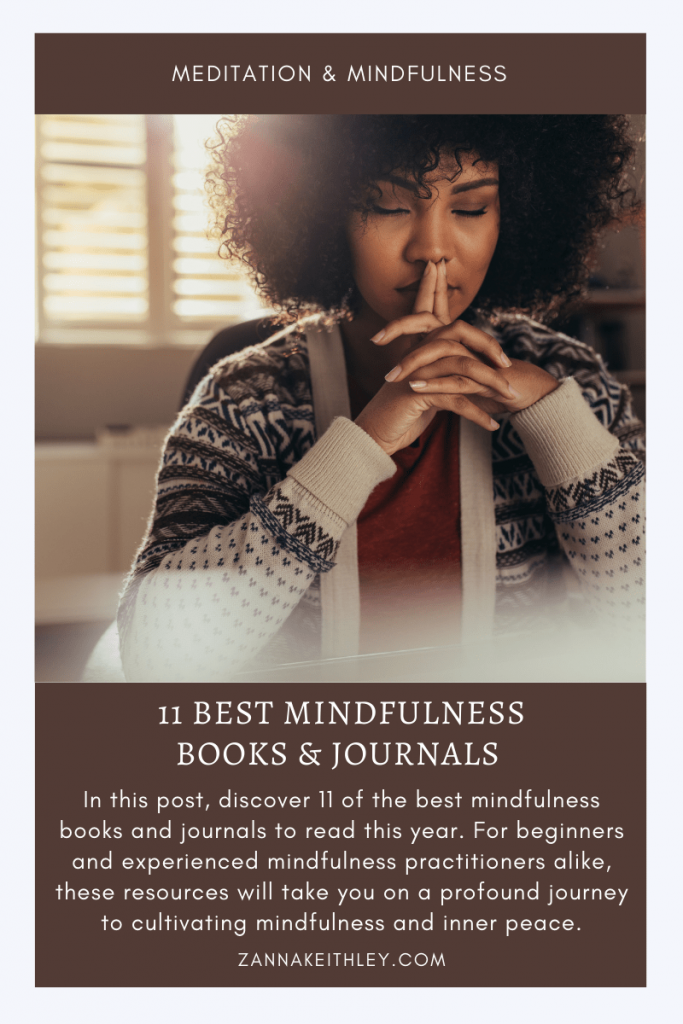
Pin this for later! 11 Best Mindfulness Books & Journals (for 2023) What Is Mindfulness?
Mindfulness is non-judgmental, conscious awareness in the present moment. This means being aware of your own thoughts, feelings, and surroundings in the present moment without putting labels on any of it as right or wrong. Mindfulness is sometimes referred to as the art of noticing, as it doesn’t require anything from you except to simply notice.
Now, if this is still kind of unclear, that’s okay. Let’s break it down a little further.
- Lack of Judgment: As humans, we experience a range of thoughts and emotions throughout our lives. Sometimes, we experience this spectrum in a single day. Anger, fear, sadness, pain, anxiety, and stress are emotions we often call negative. Likewise, we may have thoughts that we deem to be wrong or bad. The key to mindfulness is to not judge ourselves for our thoughts and emotions. Simply observe. If you notice that a thought you’re having doesn’t align with what feels good and true to you, you can take this moment to realign with your truth.
- Conscious Awareness: This means that you recognize your thoughts, words, and actions as you’re thinking, speaking, and acting. This is the opposite of the “autopilot” mode we all fall into once in a while. Conscious awareness is taking a step back, recognizing the autopilot mode, and choosing how to think and feel in this moment. (Again, when you catch yourself in autopilot mode, don’t judge yourself. It’s perfectly normal.)
- Returning to the Present Moment: I think about the past a lot. I also think about the future a lot. And that’s okay. I can also recognize that the only real thing in the world is this moment right now. You can think about the past and future, but don’t live there. Live in this moment. That’s what mindfulness does for us; it allows us to honor and recognize the beauty, value, and importance of this moment right now.
Mindfulness is knowing that nothing about this moment is wrong. Nothing is a mistake. It is exactly as it is. And if you don’t like how you’re feeling or what you’re experiencing in this moment, notice and see if you can realign with something that feels better. But don’t judge yourself for being human.
If you’d like to learn more about what mindfulness is and explore profound mindfulness quotes from top scholars and thinkers, you can learn more about mindfulness here. And in this post, I offer 10 practices to help you cultivate mindfulness today.
Below, you’ll find 11 of the best mindfulness books and journals for beginners and experienced mindfulness practitioners alike. All of the books and journals below will take you on a gentle, profound journey that leads you to the greatest destination of all: back to yourself.
- You May Also Like: 10 Best Manifestation Books to Read This Year
Mindfulness Books & Journals
Practicing Mindfulness: 75 Essential Meditations
If you’re looking to begin your own mindfulness practice, Matthew Sockolov’s Practicing Mindfulness: 75 Essential Meditations will take you on a truly profound and meaningful journey through mindfulness using meditation. Here, you’ll find 75 unique exercises. The early ones can be done in just 5 minutes a day, and as you progress in your journey, so will the meditations. This is a great guide for both beginners and experienced practitioners alike.
Think Like A Monk
Jay Shetty’s Think Like A Monk is an inspiring guide to overcoming your own negative thoughts, accessing your inner peace, and clearing any roadblocks that may be stopping you from tapping into your own power and potential. Shetty takes often complex and abstract ideas and transforms them into accessible exercises and advice that you can use in your own life to reduce stress and increase mindfulness.
Mindfulness: An Eight-Week Plan
Mindfulness: An Eight-Week Plan for Finding Peace in a Frantic World by Mark Williams and Danny Penman provides you with simple yet powerful practices for cultivating mindfulness in your daily life. It promotes true joy and inner peace and helps you to break the cycle of daily stress, anxiety, and exhaustion.
Wherever You Go, There You Are
When you start researching mindfulness, Jon Kabat-Zinn is likely one of the first names that will come up. (And likely, his name will keep appearing over and over again). This book is absolutely a must-have for those new to meditation and mindfulness as well as seasoned practitioners. Wherever You Go, There You Are takes you on a profound journey back home to yourself. It teaches you how to cultivate mindfulness your own way in a gentle yet powerful manner.
Mindfulness For Beginners
And because there can never be too much Jon Kabat-Zinn on a mindfulness list, his book Mindfulness for Beginners: Reclaiming the Present Moment and Your Life is a truly wonderful resource for anyone just starting their mindfulness journey. This book guides you back to yourself and helps you to embody the real and true you. This book is an invitation to transform the way you think, feel, work, and play in a loving, wholehearted manner.
A Year Of Zen
Bonnie Myotai Treace’s A Year of Zen is a 52-week guided journal filled will thought-provoking journal prompts and ample space to explore and reflect upon your own experiences and inner world. (And its simple illustrations are elegant and serene.)
Mindfulness For Beginners In 10 Minutes A Day
Lara Hocheiser’s Mindfulness for Beginners in 10 Minutes a Day is another great resource for those just beginning their mindfulness journey. Hocheiser provides the readers with an explanation of what mindfulness is in an easy-to-grasp way and offers simple yet profound exercises for practicing mindfulness every morning, day, and night.
The Miracle Of Mindfulness
Thich Nhat Hanh is another prominent figure in the meditation and mindfulness space. His book, The Miracle of Mindfulness, is a beautiful and gentle introduction to mindfulness, offering exercises and anecdotes that remind you that each moment holds its own gifts and opportunities for peace.
The Mindfulness Journal
Worthy Stokes’ The Mindfulness Journal: Creative Prompts to Relax, Release, and Explore the Wisdom of You is a wonderful discovery filled with gifts on every page. In addition to prompts, it offers exercises that allow you to explore mindfulness through connecting with your inner artist. This is a beautiful journal that also makes a great gift for friends and loved ones.
Star Wars: The Jedi Mind
Star Wars: The Jedi Mind: Secrets from the Force for Balance and Peace by author Amy Ratcliffe and illustrator Christina Chung pairs lessons from Star Wars with mindfulness lessons relevant to our own galaxy in the 21st century. This is a perfect gift to yourself or the Star Wars fan in your life, offering accessible lessons focused on peace, serenity, and balance.
A Year Of Mindfulness
Jennifer Raye’s A Year of Mindfulness is a 52-week mindfulness journal that includes weekly themes and daily writing prompts that allow you to cultivate mindfulness each day of the year. The simple, easy-to-follow exercises in this journal are designed to help you live in the moment and notice the world around you (and within).
Do you have any favorite mindfulness books or journals? Share your favorites in the comment box below! And for positive affirmations, self-love tools, manifestation inspiration, and spiritual resources, be sure to follow me on Pinterest and Instagram.
Looking for more? Here are a few more posts you might like:
- How To Tap Into Your Intuition (A Complete Guide)
- 500 Things To Be Grateful For Today
- Alternate Nostril Breathing: Benefits & How-To Guide
- 33 Profound Spiritual Healing Quotes To Guide Your Path
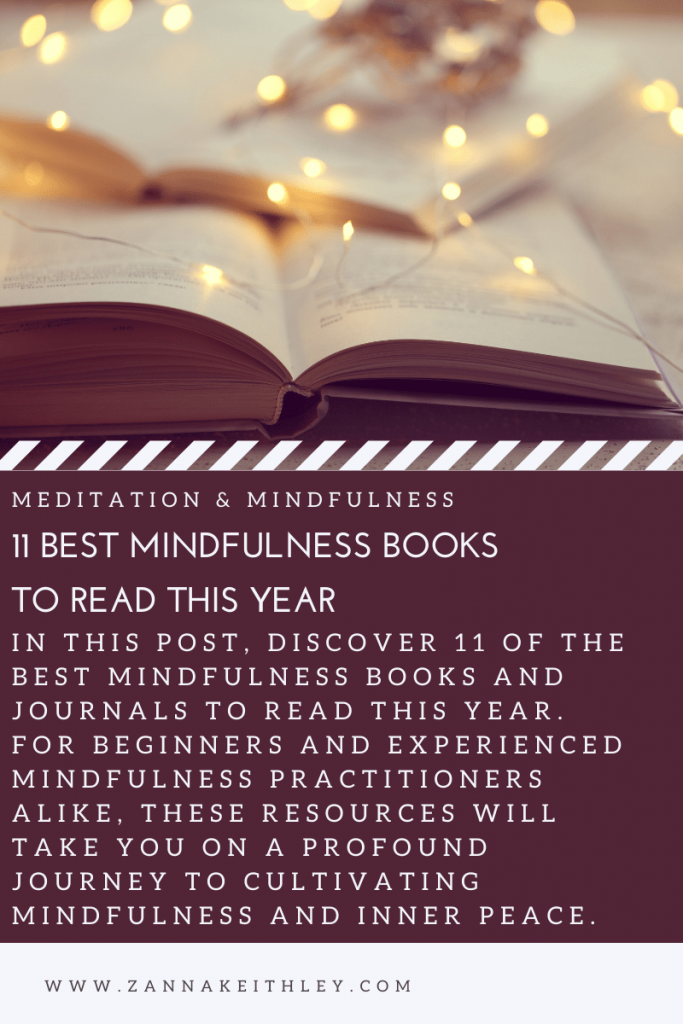
Pin this for later! 11 Best Mindfulness Books & Journals (for 2023) 
Zanna Keithley is an author, poet, and social media content creator who writes short prose dedicated to inspiring readers to follow their dreams, trust their intuition, and create beautiful and fulfilling lives. You can find her original writing on Instagram @zannakeithley.
-
The 12 Laws Of Karma Explained (A Complete Guide)
In this article, discover the true meaning of karma, plus learn what the 12 Laws of Karma are and how you can use them to create a life of genuine joy, purpose, passion, and fulfillment.
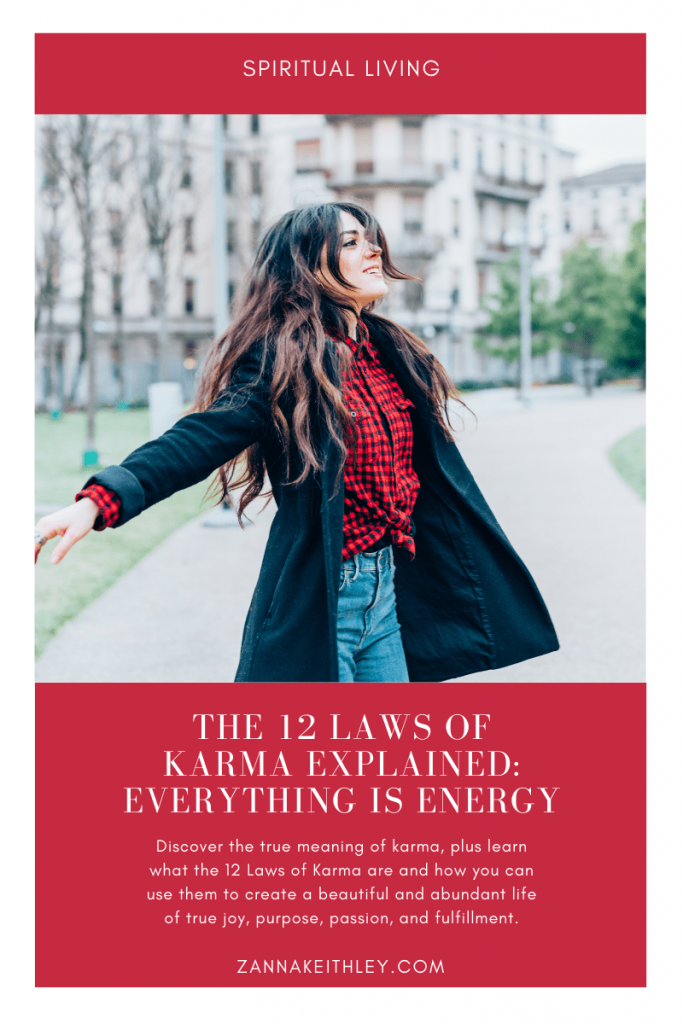
Pin this for later! The 12 Laws of Karma Explained (A Complete Guide) What Is Karma?
What do you think of when you heard the word karma?
For many of us, our first thought is the saying, “What goes around comes around.”
Often, this is said with a negative connotation. When you see or hear about somebody who lies, steals, or treats another with unkindness, you may say, “Karma will come back around and catch up with them.”
While this is one aspect of karma–and the central idea in the First Law of Karma (The Great Law)–there’s actually a lot more to the concept of karma than most of us realize.
In Sanskrit, the word karma means “action.”
When I have a good thought or do a good deed, this goodness has positive effects and ultimately comes back to me. When I have a bad thought or do something that I know is harmful, the negative effects will ultimately come back to me as well.
Good actions beget more goodness; bad actions beget more badness.
But it’s not just about good and bad.
Rather, the important thing is realizing that every action has meaning; everything you do and say contributes to the overall whole.
And most of the time, what we consider to be “good” or “bad” is subjective depending on our perspective and life experience. This is especially important to remember when it comes to events happening in your own life.
When you believe something bad is happening to you, it may be time to take a step back and evaluate your life with gentle and non-judgmental awareness.
What lessons might the universe be trying to teach you? Are you blaming others for what happens in your life, or are you able to take personal responsibility? Could there be any goodness to what you perceive as bad?
Rather than saying, “This bad thing is always happening to me,” you have the opportunity to turn it around and ask, “What can I learn from this experience?”
- You Might Also Like: What Are the 12 Laws of the Universe? (A Complete Guide)
How To Use The 12 Laws Of Karma
You get to decide your personal relationship with these laws and how you’ll use them to guide your own life path.
But I do want to offer this advice:
Don’t view these laws as rules that are meant to tie you down or fit you into a box.
The word “law” may have a negative connotation for some, as you may view it as an unbending rule that prevents you from experiencing true freedom.
But the opposite is true here.
The 12 Laws of Karma are not meant to limit or constrict you; through their very nature, they’re meant to lead you to a life of joy, freedom, passion, purpose, and love.
These laws are designed to show you the road map to a beautiful and fulfilling life. They help you to live in the present moment and find joy in this moment right now, no matter what your external world may look like.
And they show you the way to creating meaningful change and living the life you’ve always desired: the beautiful and abundant life of your dreams.
So as you read through the 12 Laws of Karma, allow yourself to gently explore them with an open heart, receiving them as a loving gift from the universe. These laws are not meant to hinder you but rather to show you the path to true freedom and to a life filled with love, fulfillment, and abundance.
The 12 Laws Of Karma
The Great Law
The Great Law, also known as The Law of Cause and Effect, fits what most of us traditionally think of when we hear the word karma. Anyone familiar with manifestation and the Law of Attraction will also be familiar with the concepts presented in this law.
The foundation of the Great Law is the idea that whatever we put out into the world is what we get back. While you may think of this in terms of actions (i.e. if you see someone drop their wallet and pick it up to give back to them, this kindness will come back to you), it’s also important to view it in terms of energy.
The energy you put out into the world is what comes back to you, whether you’re conscious of it or not.
Say you wake up every morning feeling frustrated and annoyed that you have to go to work again today. The shower water is never hot enough, the other cars on your commute are always driving too slow, and everyone else seems to be getting raises and promotions but not you.
You have a scarcity mindset; no matter how much you have, it’s never enough. Because of this, you emit negative energy into the universe. And even though you don’t want to receive more negativity, that’s what you keep getting: more scarcity, more lack, more lukewarm showers and slow commutes.
But what if you changed your perspective? What if you stepped into the shower feeling grateful for the running water that keeps you clean? What if you focus on the fact that you have reliable transportation to get you to work? What if every time one of your coworkers got a raise or promotion, you cheered them on?
Things change once you start viewing your world from the perspective of gratitude and appreciation; you emit positivity into the world, and thus, you receive more positive energy in return.
Do you want abundance in your life? Become the embodiment of abundance. Do you want love? Start with showing yourself unconditional love, then share that love with the world around you. If you want something, become the embodiment of that thing, then watch as more of it flows into your life in beautiful and miraculous ways.
- You Might Also Like: How To Practice Gratitude (For Law Of Attraction)
The Law of Creation
The first law flows effortlessly into this second law, and it’s likely you’ll quickly see how all of these laws are intertwined.
The Law of Creation states that you must take action to create the life you desire. You are a powerful creator, and you have the power to co-create your life along with the universe. But too often, we sit back, hoping things will work out but not actively doing anything about it. You must become an active participant in your story.
This doesn’t mean trying to control outcomes, forcing things to happen, or stubbornly staying on a path that doesn’t truly feel right for you.
Rather, it goes back to the idea of putting out the energy you want to receive. And it also means taking inspired action when your intuition leads you in a certain direction.
If you want to create abundance, first become abundance. Then, when you feel that nudge to take action, do so in a state of effortless flow. This is what co-creating is: setting an intention, telling the universe what you want, become the embodiment of what you want, and trusting the universe to lead you where you’re meant to go.
The Law of Humility
Are you able to accept responsibility for your past and current reality? For instance, let’s go back to the “hate your job” scenario. Let’s say that you’re in a position you don’t enjoy, and you haven’t received the promotion or raise you think you deserve. You enter the office with a bad attitude and leave with an even worse one.
Do you blame your boss or your coworkers for your unhappiness?
Is there someone else a few cubicles away who seems to be getting all of the rewards you want, and you blame his or her success for your failure?
The Law of Humility is all about accepting that you have created your current reality through actions, choices, and the energy you’ve emitted. It’s about not blaming others for everything that’s seemingly going wrong in your life but taking responsibility for your current place in life.
In order to change something, you must first accept it. So in order to change the circumstances of the job you don’t like, you must accept the role you’ve played in creating your current experience; through acceptance, you remove your blinders, embrace the truth, and are able to see what must change in order to create a life that you love.
The Law of Growth
Do you consider yourself a fixer? Do you good-intentionally try to change the people in your life in order to help them? When things are going badly, do you first try to change your external world (places, people, things) before looking internally?
The Law of Growth says that there is only one thing you truly have control over: yourself. If you want to make a positive mark on the world, don’t start with what you can do externally; start with what you can do internally. To change the world, start with changing yourself.
This doesn’t mean you have to become a different person. In fact, the opposite is true. The hardest part of growth often comes from removing everything that prevents you from connecting with the truest, most authentic you.
This also means that you may have to accept that you can’t change everything or everyone, even if you believe it would be in their highest good. Trust that if you focus on your own growth and your own path, you’ll illuminate the way for others. But it has to be their choice.
The Law of Responsibility
The Law of Responsibility links closely to the Law of Humility (and, in fact, all the laws I’ve discussed above).
Can you take responsibility for your current life circumstances, good and bad?
The Law of Responsibility states that rather than looking for external reasons and excuses for why something might be wrong in your life, you must look internally. Because it doesn’t start out there; it starts in here. In me. In you. In all of us.
It’s important to truly evaluate your life from a place of non-judgmental, conscious awareness. What’s going right? What’s going wrong?
Instead of looking outward for reasons why something might be going right or wrong, look inward. Know that this isn’t about judging or criticizing yourself. (In fact, I encourage you not to judge, berate, or criticize yourself.) It’s about taking responsibility for the choices you make, whether that be an action you’ve chosen to take or an energy you’ve chosen to emit.
The Law of Connection
The Law of Connection states that everything in the universe, and everything in your life, is connected: your past, present, and future.
No action or decision is insignificant because every action effects who you become. Your actions yesterday affect the person you are today, and your actions today affect the person you are tomorrow.
When I think of the Law of Connection, I like to think of the affirmation, “Every small step I take makes a big difference.”
I can use this website itself as an example. There are a lot of daily actions I take to maintain this website. There are also certain things I had to do only once or twice, like installing a certain plugin or uploading a picture for my author bio. I write and edit multiple blog posts a week and create dozens of Pinterest pins for my blog posts. I’ve changed the overall layout of the site several times, which is a task that can take a lot of time depending on the extent of my changes.
So is writing a blog post more important than installing a plugin? Is changing the layout more important than uploading an author bio picture?
According to the Law of Connection, no. Each step leads to the next step, and no step is more important than the other because they’re all connected. This is true for everything in our lives.
And this is true in terms of yourself, as well. You may think of some of your past days as being more important and consequential than others, but every single day you’ve experienced has created the person you are today. Everything is connected. Everything is important. Your past, present, and future are all intertwined and deeply connected to one another.
The Law of Focus
The Law of Focus states that you should focus on one thing at a time, and if your focus is on spiritual values, you will not have space in your life to focus on lesser feelings such as greed, jealousy, and anger.
What are spiritual values? They’re feelings and beliefs stemmed in love, peace, compassion, trust, and kindness: positive thoughts and emotions that welcome more of these positive feelings into your world. Ultimately, you decide your highest spiritual values and what feels true and right for you.
When you focus on feelings that allow you to be spiritually aligned, you have no room in your mind or heart for negative energy that doesn’t serve your mind, body, or spirit.
The Law of Giving & Hospitality
What do you believe in? What do you want most for the world? Do you have a vision of a world that is filled with peace and love? Do you believe in selfless kindness and generosity? Do you believe in connection over division and compassion over judgment?
This law is essentially the practice what you preach law. The Law of Giving & Hospitality calls on you to demonstrate what you believe in and become the embodiment of your genuine desires for this world.
If you envision a world filled with peace and love, give peace and love to yourself and others.
If you believe in selfless kindness and generosity, be selflessly kind and generous to all.
If you want to see a world connected in compassion and love, give this love and compassion and become connected to all.
Let your actions reflect your deepest and truest beliefs. If you want to see change in the world, become the change by giving what you seek.
The Law of Here and Now
The only thing that truly exists is this moment right now. The past is gone, and the future is not here. True inner peace comes from embracing the present moment.
The Law of Here and Now states that true peace of mind comes from living in the present moment, and you cannot embrace the present moment if you’re always looking back into the past or ahead into the future. Reliving the past prevents you from engaging with your life just as it is right now. And when you’re constantly focusing on the old, you’re unable to create the new.
When you find yourself replaying events of the past or worrying about the future, gently bring yourself back to the present moment. Use all of your senses to discover the world that exists right now. You might have a grounding mantra that helps, such as, “In this moment, I have everything I need.”
The Law of Change
Have you ever heard the phrase, “History repeats itself”? That concept is at the core of the Law of Change, which states that history will continue to repeat itself until you’ve learned the lessons you’re meant to learn and have taken actionable steps to change the pattern.
You might see this play out in all different parts of your life: relationships, career, and your own personal relationship with yourself. If you’re continually seeing the same cycles repeat themselves in your life, it’s worth stepping back and asking—what is the universe trying to teach me? Are there attachments, connections, beliefs, or old stories I’m not letting go of? Is there an intuitive knowing deep inside me that I keep ignoring?
Change can be scary sometimes, but when you embrace change and start on a new path, you open yourself to experiencing genuine joy, fulfillment, and growth.
The Law of Patience and Reward
The Law of Patience and Reward is rooted in the belief that consistency, patience, and continuing to show up day after day, even when you don’t see the rewards today, will bring true joy, peace, and fulfillment.
I think of this as the law of no overnight successes.
To help myself in moments when I begin to feel impatient, I think back to my marathon training program. When I signed up for my first marathon, I knew I wouldn’t be able to suddenly run 26.2 miles overnight. So I created a training program in which I ran 4 days a week with 3 rest days.
Each week, over the course of 14 weeks, I slightly increased my long runs and overall mileage by a mile or two. On the day of the marathon, I trusted that my consistency, effort, and patience in the process would pay off. And you know what? It did. Four hours and thirty-two minutes later, I crossed the finish line, my first full marathon complete.
Now, this can be a little different from other scenarios that require consistency and patience. While I had an exact date to work toward for my marathon, you might be working on a goal in which you have no idea when you’ll see the rewards of your effort. And that’s okay. Just know that showing up for yourself day after day and being consistent in your efforts is always worth it.
Meanwhile, don’t wait for all of your dreams to manifest in your reality before you allow yourself to experience true joy. Feel joyful now knowing that you are on the path, aligned with your purpose and passion, and exactly where you’re meant to be in this moment.
The Law of Significance and Inspiration
You matter. Your voice matters. Your presence matters. You were born with specific goals and talents that only you possess. Only you have lived your unique experiences. And that dream that’s in your heart? It’s there for a reason.
The Law of Significance and Inspiration states that every single one of us contributes to the greater whole. We all play a part in contributing to the highest good of the world.
And what you’re doing? It matters. When you put your heart into something and contribute your gifts and talents with wholehearted love, you are creating a ripple effect that you probably can’t even see.
You’re lifting up others and inspiring others to follow their hearts, too.
And the more positive energy and loving intentions you put into your contribution, the more you’re not only contributing to the highest good for all, but to yourself as well. You will get back all of this positive energy in ways you can’t even imagine.
So know that everything you do matters. Your purpose and your gift matter.
You matter. More than you know.
What’s your relationship with the 12 Laws of Karma? Do any of these laws feel especially meaningful to your life experiences? I’d love to hear about your experiences in the comment box below.
And for more resources on spirituality, meditation, manifestation, and all things self-love, be sure to connect with me on Instagram and Pinterest, where I’m posting positive affirmations and empowering messages daily.
You May Also Like:
- 33 Profound Spiritual Healing Quotes To Guide Your Path
- 30 Journal Prompts For Self Growth (& Deeper Self-Love)
- Vision Board Ideas To Visualize Your Ideal Future (With Examples)
- 9 Powerful Guided Meditations For Manifesting Your Dreams
- How To Protect Your Energy (7 Essential Practices)
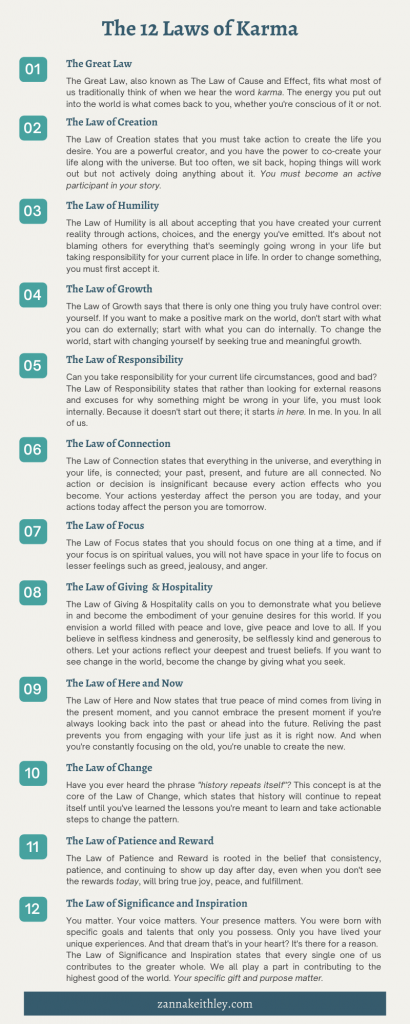
Pin this for later! The 12 Laws of Karma Explained (A Complete Guide) 
Zanna Keithley is an author, poet, and social media content creator who writes short prose dedicated to inspiring readers to follow their dreams, trust their intuition, and create beautiful and fulfilling lives. You can find her original writing on Instagram @zannakeithley.
-
Alternate Nostril Breathing Benefits & How-To Guide
In this article, discover the health benefits of alternate nostril breathing, a breath control practice in which you alternate inhaling and exhaling out of each nostril. You’ll also learn about the spiritual benefits of this practice and get a step-by-step guide on how to start today.

Pin this for later! Alternate Nostril Breathing (Nadi Shodhana Pranayama): Benefits & How-To Guide What is Alternate Nostril Breathing?
Alternate nostril breathing, also known as Nadi Shodhana or Nadi Shodhana Pranayama (translated to “subtle energy clearing breathing technique”), is a breath control practice commonly used in meditation and yoga. It’s often used as a way to clear blocked energy within your body as well as to cultivate a sense of calm and stillness within.
The practice of alternate nostril breathing is exactly as it sounds; it’s a breathing technique in which you alternate breathing in and out of each of your nostrils by closing off one of your nostrils with your fingers.
A typical practice might look something like this: close your right nostril and inhale through your left nostril. At the top of your inhale, switch and close your left nostril, exhaling out of your right nostril. Inhale through your right nostril, then close it and exhale out of your left nostril. Inhale through your left nostril, then close it and exhale out of your right nostril. Continue this pattern for the remainder of your practice.
Below, I’ll discuss this practice in greater detail. First, though, let’s look at the health benefits of alternate nostril breathing as well as the spiritual benefits of utilizing this powerful practice.
Health Benefits
So why practice alternate nostril breathing? Personally, I practice it as a way to calm my mind and ground myself to the present moment. When I sit down to meditate, I find it helpful to take a minute or two to practice alternate nostril breathing before I begin. This helps me to release distractions, clear my mind, and get centered as I start my meditation.
I also use alternate nostril breathing as a way to clear any blockages in my body’s energy channels, which I’ll discuss in more detail in the Spiritual Benefits section below.
Here are some of the commonly cited health benefits of alternate nostril breathing:
- Calms the mind
- Reduces anxiety
- Reduces stress
- Relaxes the body
- Improves cardiovascular function
- Improves lung function
- Promotes overall well-being
While the positive benefits of alternate nostril breathing have been promoted by yogis and meditation practitioners for years, there’s now some scientific evidence to back up these claims.
In this 2013 study, researchers found that those who practiced alternate nostril breathing showed a reduction in perceived stress levels and well as lower heart rates, respiratory rates, and blood pressure.
And in this 2017 study, researchers found that the practice of alternate nostril breathing (as well as other yogic breathing techniques) had a positive effect on respiratory endurance and the lung functions of competitive swimmers.
This 2018 review also shows how various yogic breathing techniques, including alternate nostril breathing, can be beneficial to one’s overall health and well-being.
If you have any questions about whether alternate nostril breathing could be helpful for you, please talk to your healthcare practitioner.
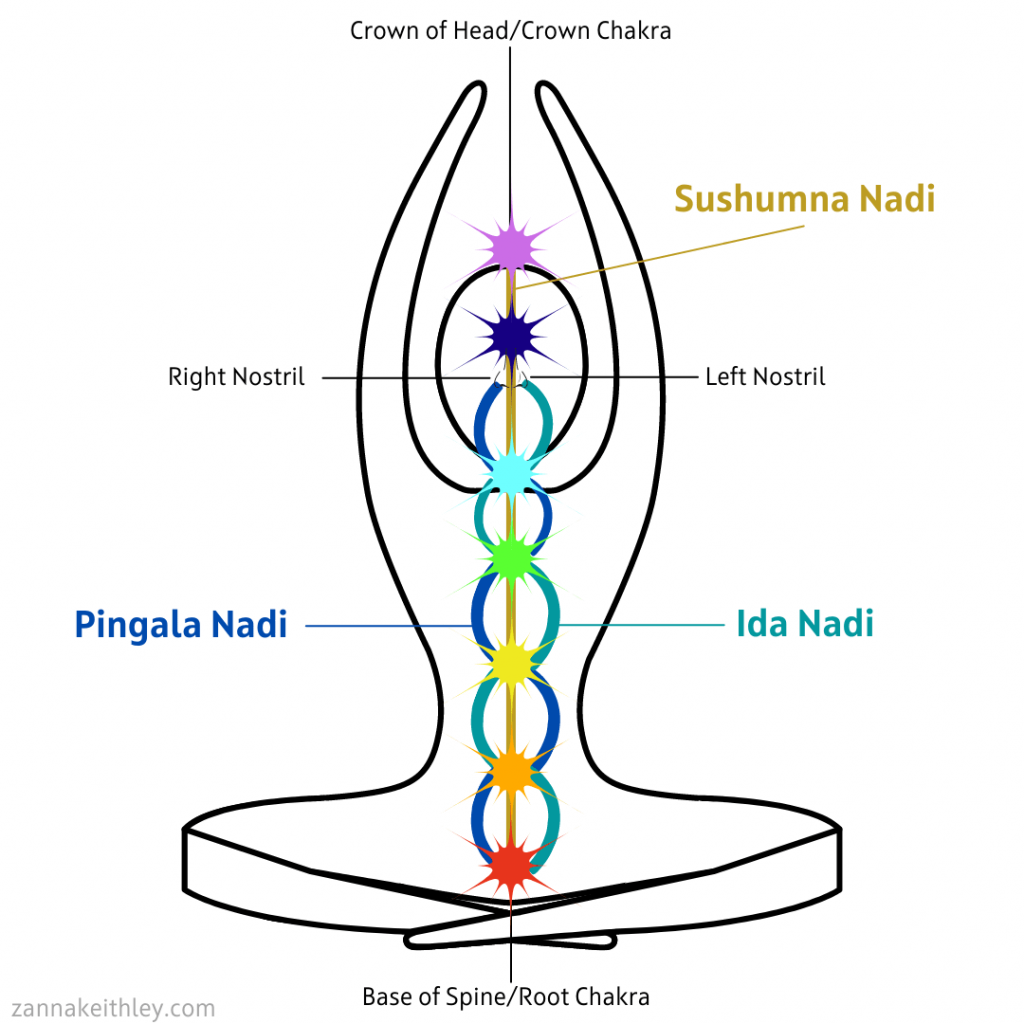
Spiritual Benefits
The spiritual benefits of alternate nostril-breathing can be linked to your chakra system, and more specifically, your nadis.
What are nadis? Nadis are the energy channels through which your life force flows; the word nadi is a Sanskrit word meaning “tube”, “channel”, or “flow.”
Many estimate that you have between 21,000 to 72,000 nadis in your body, though some believe there could be hundreds of thousands or even millions of nadis within each of us. Two of the most important nadis that you should know about are your Ida Nadi and your Pingala Nadi.
Your Ida Nadi is associated with your feminine energy and starts at the base of your spine (at your root chakra). It then runs through your core to your left nostril. It’s associated with right-brain dominance and what you might describe as your softer, darker energy.
Your Pingala Nadi is associated your masculine energy. It starts at the base of your spine (also at your root chakra) and runs through your core to your right nostril. (The Ida Nadi and the Pingala Nadi flow upwards criss-crossing each other at your chakra points.) It’s associated with left-brain dominance and what you might describe as stronger, lighter energy.
When your nadis become blocked, you may experience energy imbalances that can have negative effects on your physical, mental, emotional, and spiritual self. One way to clear energy imbalances is through alternate nostril breathing.
As you can see from the image above, your Ida Nadi runs through to your left nostril, and your Pingala Nadi runs through your right nostril. Alternate nostril breathing is a direct connection to these energy channels.
To know if either of these nadis might be blocked, you can do a quick test now. Gently press any of the fingers on your right hand against the right side of your nose, closing the right nostril. Place the fingers of your left hand below your left nostril. Exhale through your nose, noticing whether you can feel the warm air of your exhale against your left fingers. Then try this with your right nostril.
If you feel little or no air out of your left nostril, your Ida Nadi may be experiencing blockages. This represents your feminine energy, which is tied to surrendering, allowing, and just being.
If you feel little or no air out of your right nostril, your Pingala Nadi may be experiencing blockages. This represents your masculine energy, which is tied to hustling, achieving, and doing.
Neither side is more or less important than the other; when you find a balance between the two, you’re able to live your truest, most authentic life.
If you’re experiencing blockages to either of these energy channels, alternate nostril breathing can be a powerful tool to help clear these blockages.
However, I definitely encourage you not to stop there. It’s important to listen to your inner rhythm. For instance, if you’ve been in hustle mode for too long, your inner being may tell you it’s time to step back for a while and allow yourself to just be.
- You May Also Like: How To Create A Meditation Table (A Complete Guide)
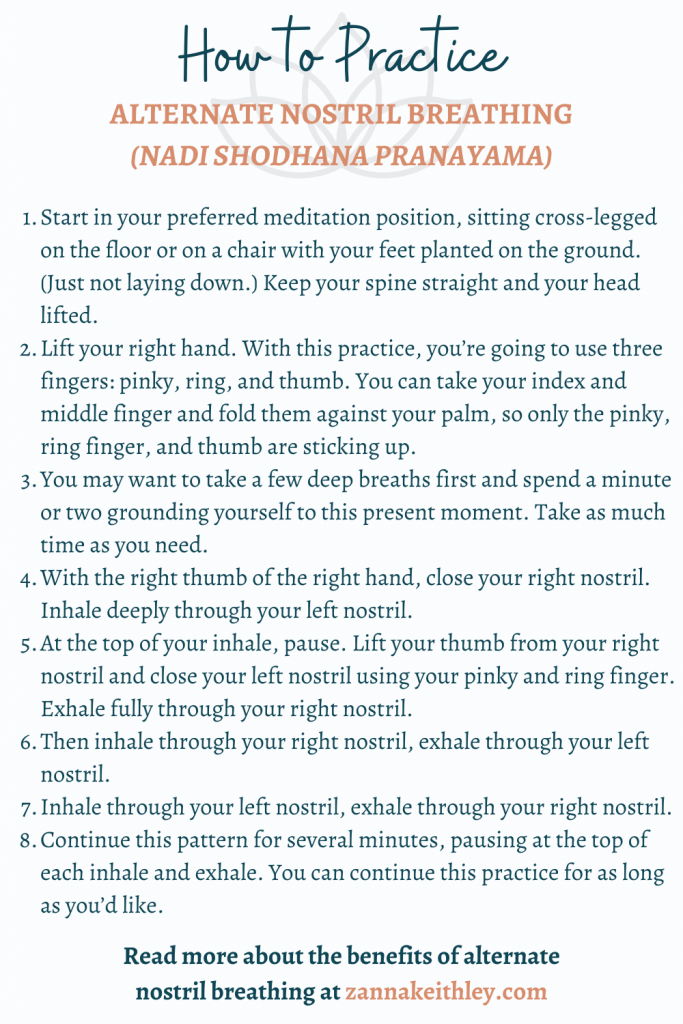
Pin this for later! How to Practice Alternate Nostril Breathing
So are you ready to try alternate nostril breathing? Below, you’ll find step-by-step instructions to begin this powerful practice.
Please note that while my instructions have you starting out in a certain position, you don’t necessarily have to be in a meditation position to do this throughout the day. For instance, if you’re at work and want to practice alternate nostril breathing at your desk, that’s totally fine!
- You can start in your preferred meditation position, sitting cross-legged on the floor or on a chair with your feet planted on the ground. (Just not laying down.) Keep your spine straight and your head lifted.
- Lift your right hand. With this practice, you’re going to use three fingers: pinky, ring, and thumb. You can take your index and middle finger and fold them against your palm, so only the pinky, ring finger, and thumb are sticking up.
- You may want to take a few deep breaths first and spend a minute or two grounding yourself to this present moment. Take as much time as you need.
- With the right thumb of the right hand, close your right nostril. Inhale deeply through your left nostril.
- At the top of your inhale, pause. Lift your thumb from your right nostril and close your left nostril using your pinky and ring finger. Exhale fully through your right nostril.
- Then inhale through your right nostril, exhale through your left nostril.
- Inhale through your left nostril, exhale through your right nostril.
- Continue this pattern for several minutes, pausing at the top of each inhale and exhale. You can continue this practice for as long as you’d like.
As you continue to practice, try to follow your breath all the way from the base of your spine to your nostrils. Both your Ida Nadi and Pingala Nadi begin at the base of your spine and go through your left and right nostrils, respectively. Following the breath from the base of your spine through your nostrils allows you to connect with these energy channels, helping you to clear any blockages in either or both nadis.
Have you tried alternate nostril breathing? What benefits have you found through using breath control practices? Leave your comments and questions in the comment box below!
And for uplifting affirmations, chakra resources, meditation tools, self-love encouragement, and more, be sure to follow me on Pinterest and Instagram!
More Articles You May Like
- How to Protect Your Energy (7 Essential Practices)
- Sacred Self-Care For The 7 Chakras (A Complete Guide)
- Vision Board Ideas To Visualize Your Ideal Future (With Examples)
- 8 Powerful Guided Meditations For Manifesting Your Dreams
- 30 Journal Prompts For Self Growth (& Deeper Self-Love)

Pin this for later! Alternate Nostril Breathing (Nadi Shodhana Pranayama): Benefits & How-To Guide 
Zanna Keithley is an author, poet, and social media content creator who writes short prose dedicated to inspiring readers to follow their dreams, trust their intuition, and create beautiful and fulfilling lives. You can find her original writing on Instagram @zannakeithley.
-
10 New Moon Rituals For Manifestation & Self-Love
In this article, discover 10 profound new moon rituals for connecting with your innermost self, letting go of what no longer serves you, and planting seeds of abundance in your inner and outer worlds.
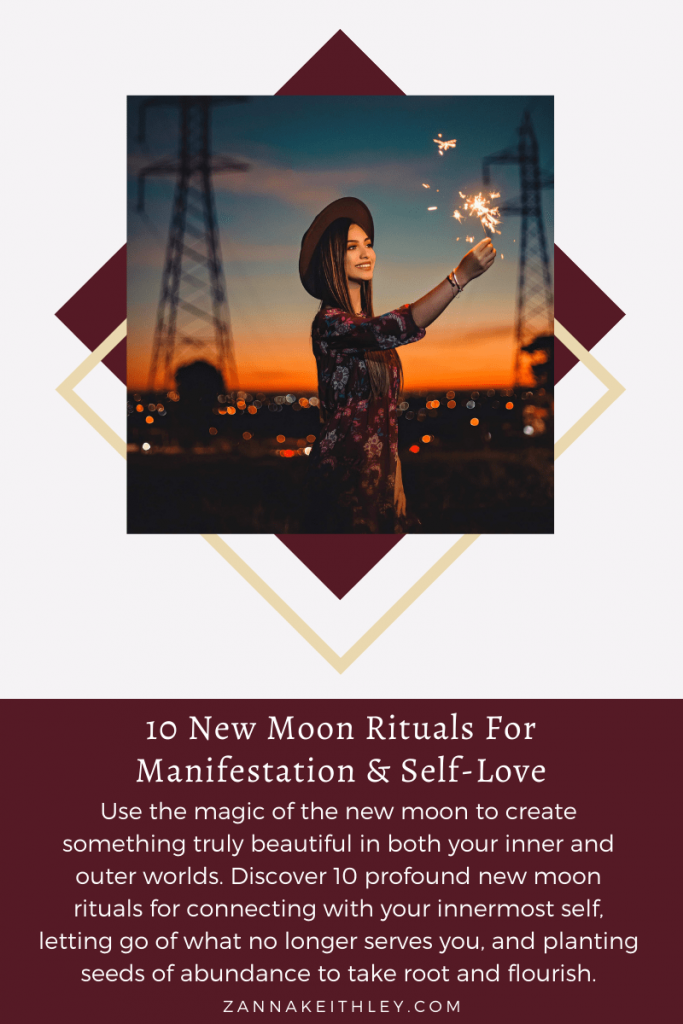
Pin this for later! 10 New Moon Rituals For Manifestation & Self-Love New Moon Symbolism
Like the moon, we go through our own cycles and phases. Sometimes, we feel vibrant and energized, shining our light fully. Other times, we need to go inward and get in touch with our innermost selves for a little while.
The new moon offers an opportunity for just this: a chance to go within, refresh, let go, and start anew.
You might think of the new moon as a cosmic reset. During this time, you can check in with yourself. Are you aligned with your purpose? Are you holding onto anything you need to let go of? Are there any new habits or rituals you can start incorporating into your daily routine to support your mind, body, and soul? What is your heart telling you about your path?
The new moon offers a beautiful opportunity for any and all of these practices:
- Setting intentions for who you want to be, what you want to manifest, and how you want to show up in your daily life
- Connecting to your deepest dreams and desires
- Releasing what no longer serves you to make space for new beginnings
- Cleansing old and stagnant energy
- Embracing your ability to co-create with the Universe
- Honoring the light and love that flows to and through you in all moments
Below, you’ll find 10 profound new moon rituals for connecting to your inner self, letting go of what no longer serves you, and planting seeds for your dreams and desires to take root.
Every new moon, see if you can incorporate at least two or three of these rituals into your routine.
Use the magic of the new moon to create something truly beautiful in both your inner and outer worlds.
New Moon Rituals
Plant Seeds Of Intention
This is one of my personal favorite new moon rituals, as you can complete this practice either through visualization or by actually planting physical seeds where, in time, you can watch them grow.
In this ritual, you’ll be planting three seeds that represent the intentions you want to set for the next month. I usually complete this as a visualization meditation, but there’s also something special about planting three physical seeds and watching them grow and thrive over time (just like your intentions).
Take the first seed and imagine yourself gently planting it in the earth in front of you. (Or actually plant it in the soil.) See your intention manifesting in your reality, and feel the positive emotions associated with this dream coming true. Express gratitude to the Universe for supporting you in your dreams.
Repeat this with the second seed, planting another intention in the earth in front of you. Finally, repeat this process with the third seed.
Once all your intentions have been planted, release them to the Universe. Feel peace, love, and abundance filing every cell of your being. End this ritual by expressing more sincere gratitude
Write A New Moon List
In a sacred space (or somewhere that allows you to truly connect with your inner self), take some time to consider your innermost dreams and desires. What is your heart telling you? What does your soul truly need?
Here are some topics you might want to include in your list. Consider your list to be a way of communicating with your highest self and the Universe. You might even read your list items aloud under the night sky.
- Everything you want to manifest in the next month
- Everything you’re releasing
- What you’re grateful for
- The primary feelings you want to embody (joy, peace, abundance, love, etc.)
- Any other changes you want to make over the next month, such as starting a new morning routine or making more time for self-care.
Journal Your Innermost Feelings
The new moon offers the perfect opportunity to get in touch with your highest self, and one of the most profound ways to do this is through journaling. Allow yourself time and space where you won’t be interrupted. Create a space where you feel safe and at peace, whether that’s in your sacred space or outside under the stars. Consider what energies you want to release and what you want to embrace more of over the next month.
Here are a few sentences you can include in your new moon journal entry:
- “I am releasing . . .”
- “I am setting the intention to . . .”
- “I am manifesting . . .”
- You can also ask yourself: “What does my soul need?”
Take A Detox Bath
A detox bath allows you to detox your total self: mind, body, and soul. This bath is meant for spiritual and energetic cleansing. During this time, put away your phone or any other distractions. Focus solely on your own inner tranquility. Sink into relaxation and self-care. By embracing your inner peace, you release stagnant energy within and make space for new energy to come forth.
Here are some items you might use in this bath ritual:
- Essential oils, especially ones that promote relaxation, such as lavender, bergamot, and clary sage
- Epsom salt
- Himalayan pink salt
- Candles
- Dried flower petals
- Crystals
Cleanse Your Space
Because a new moon represents new beginnings, this is an ideal time to cleanse your space – both physically and energetically.
Take some time to physically declutter the spaces you spend the most time in. As you go through your items, ask yourself, “Does this represent the person I used to be or the person I want to become?” Get rid of anything that doesn’t align with the person you’re becoming.
You can also cleanse the energy of the spaces you spend the most time in by burning incense or lighting candles in the room. If possible, open the window so any old, stagnant energy in the room can be released.
Do A Candle Manifestation Ritual
Candles can be a profound addition to your new moon ritual, as they promote inner peace, help you to release negative energy, and open your heart and mind to receiving.
It’s best to do this ritual with a new candle (or one that is specifically used only for this purpose).
Once you light your candle, start visualizing your dreams and desires coming true. What does your life look like when you have everything you desire? How do you feel? See and feel everything as if it’s happening in this very moment.
Then, speak your intention aloud to the Universe. Once you’re done, express sincere gratitude and let go, trusting that everything is working out for your highest good.
To learn more about how to use candles for manifestation, plus the meanings of different candle colors, you can check out my complete guide here.
Meditate Under The Night Sky
This one is exactly as it sounds: connect with the energy of the new moon by going outside to meditate. You might do a visualization meditation, such as planting your three seeds of intention. You could also do a walking meditation by taking a nice, moonlight stroll. Your meditation can also be rooted in affirmations for releasing what no longer serves you and embracing new beginnings.
Your meditation should center around whatever your soul needs most in the moment. If you need to release something that’s been weighing you down, visualize yourself letting go of these feelings, experiences, people, or things.
If you want to manifest your desires, let your meditation be about visualizing your dreams and setting intentions.
And if you’re not sure what you need, enter your meditation with the intention of clearing your mind and seeing what comes to you. You might ask the Universe for gentle guidance before you start.
Communicate With Your Guides
This can be especially helpful for you if you’re not quite sure what intentions you want to set for this lunar cycle.
Communicate with your highest self, your guides, or with the Universe itself. (This can be done through meditation or journaling.) Ask for clear, gentle, loving guidance.
What should you let go of? What should you embrace more of? Where should you focus your energy? See what answers arise, but have patience if the answers don’t come right away. Your highest self may know the path, or you may need to step back and allow the Universe to communicate messages through signs and synchronicities.
Over the next few days, keep an open heart and an open mind to whatever messages come through.
Express Gratitude
Gratitude can be incorporated into all of the practices on this list, and it can also be the center of its own special ritual. Expressing gratitude is a beautiful way to honor the abundance of all that you have in your life.
You can also express appreciation for all that’s on its way to you right now: your dreams, desires, and manifestations. In your sacred space, write down a list of all that you’re grateful for in your life – for what is, what has been, and what’s coming.
I’ve found it to be a deeply profound practice to also express gratitude for anything you’re releasing. Maybe these thoughts, beliefs, things, or experiences don’t serve who you are today, but they helped you to grow. Maybe the presence of what you don’t want has taught you what you do want. Even your fears can be teachers. Fears often exist as a way to protect yourself. You can thank your fears for protecting you and let them know you no longer require their service.
When you can step back and view your life through the lens of appreciation, you invite more beautiful people, experiences, opportunities, and feelings to enter your world.
Let Go
Let go has a couple different meanings here, and depending on where you are on your path, you may need one or both to help you move forward.
First, the new moon offers you the chance to let go of anything that no longer serves and supports your mind, body, and spirit. Let go of limiting beliefs that are weighing you down. Let go of fears that are keeping you small. Let go of the stories you’re telling yourself about why something can’t be done.
And, if necessary, let go of anything in your physical life that’s no longer meant to be a part of the chapter you’re in right now: people, things, and experiences.
Letting go also means turning over your intentions and desires to the Universe. If you’ve spoken your innermost dreams to the Universe, allow yourself to let go of control and trust that you are being taken care of and supported in all moments.
Trust that the Universe is working behind the scenes to make sure everything works out better than you can imagine.
Trust it all to unfold beautifully, exactly as it’s meant to.
Don’t focus on the absence of your desires in this moment; focus on the abundance of all that you have and all that’s on its way to you.
Because when you focus on your abundance, your abundance grows.
New Moon Rituals – Recap
- Plant seeds of intention.
- Write a new moon list.
- Journal your innermost feelings.
- Take a detox bath.
- Cleanse your space.
- Do a candle manifestation ritual.
- Meditate under the night sky.
- Communicate with your guides.
- Express gratitude.
- Let go.
What are your favorite new moon rituals? Share your tips and experiences in the comment box below!
And for more resources on spirituality, meditation, manifestation, and all things self-love, be sure to connect with me on Instagram and Pinterest, where I’m posting positive affirmations and empowering messages daily.
More Posts For You
- Vision Board Ideas To Visualize Your Ideal Future (With Examples)
- Morning Routine Checklist For Manifestation (Free PDF Template)
- Manifestation Challenge: Free 30-Day Calendar
- How To Manifest Something: 10 Essential Manifestation Methods
- Law Of Attraction Scripting Template (Free PDF Template)
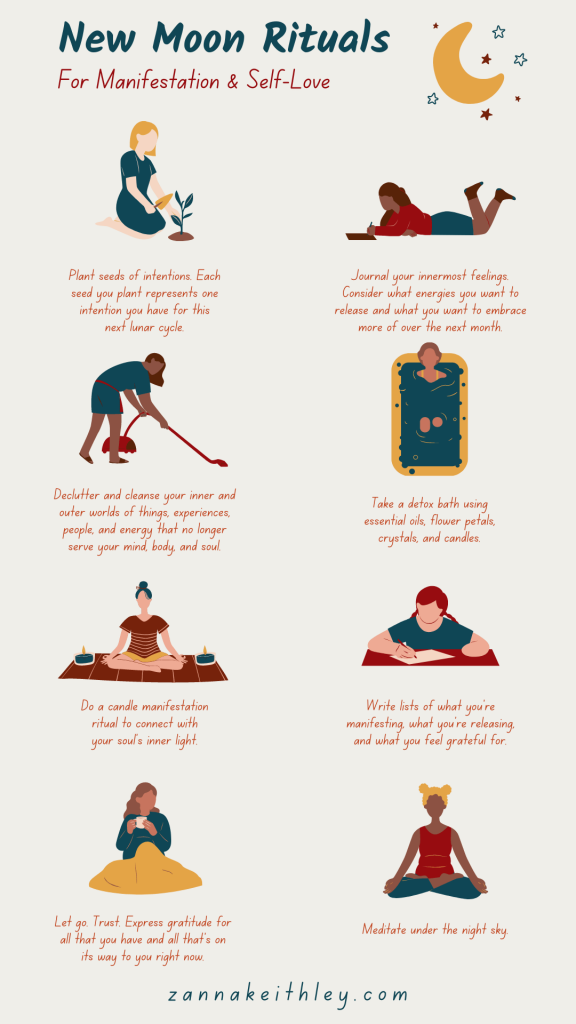
Pin this for later! 10 New Moon Rituals For Manifestation & Self-Love 
Zanna Keithley is an author, poet, and social media content creator who writes short prose dedicated to inspiring readers to follow their dreams, trust their intuition, and create beautiful and fulfilling lives. You can find her original writing on Instagram @zannakeithley.

